

A short history of Gianni Agnelli’s incredible car and yacht collection
From a custom-made 36 metre yacht to a fiat panda, these are the most outrageous vessels and vehicles owned by the italian industrialist.
Words: Jonathan Wells
Gianni Agnelli, the fashion-forward Fiat chairman, always wore hiking boots with his impeccably tailored suits. Why? Because the Italian industrialist — and consummate style icon — once sustained a leg injury so severe that the sturdy choice in footwear was forced upon him. The accident? A car crash — while speeding away from an intimate encounter with a woman who was neither his wife or girlfriend.
That was 1952. But, despite giving himself a life-altering injury behind the wheel, the old cad wasn’t put off motoring. In fact, in the decades to follow, Agnelli spent thousands and thousands on his automotive obsession. He ordered Pininfarina-designed Ferraris. He thrashed his modest Fiat 125 sedan about Turin. The businessman was even known to drive his own chauffeur around — such was his desire to get behind the wheel.
And it didn’t end with cars. Yachts and speedboats, too, were a known vice of L’Avvocato, or ‘The Lawyer’, as Agnelli was widely known. Below, we’ve rounded up the finest vessels and vehicles that this fascinating, fashionable man ever owned…
1992 Lancia Delta Integrale Spider
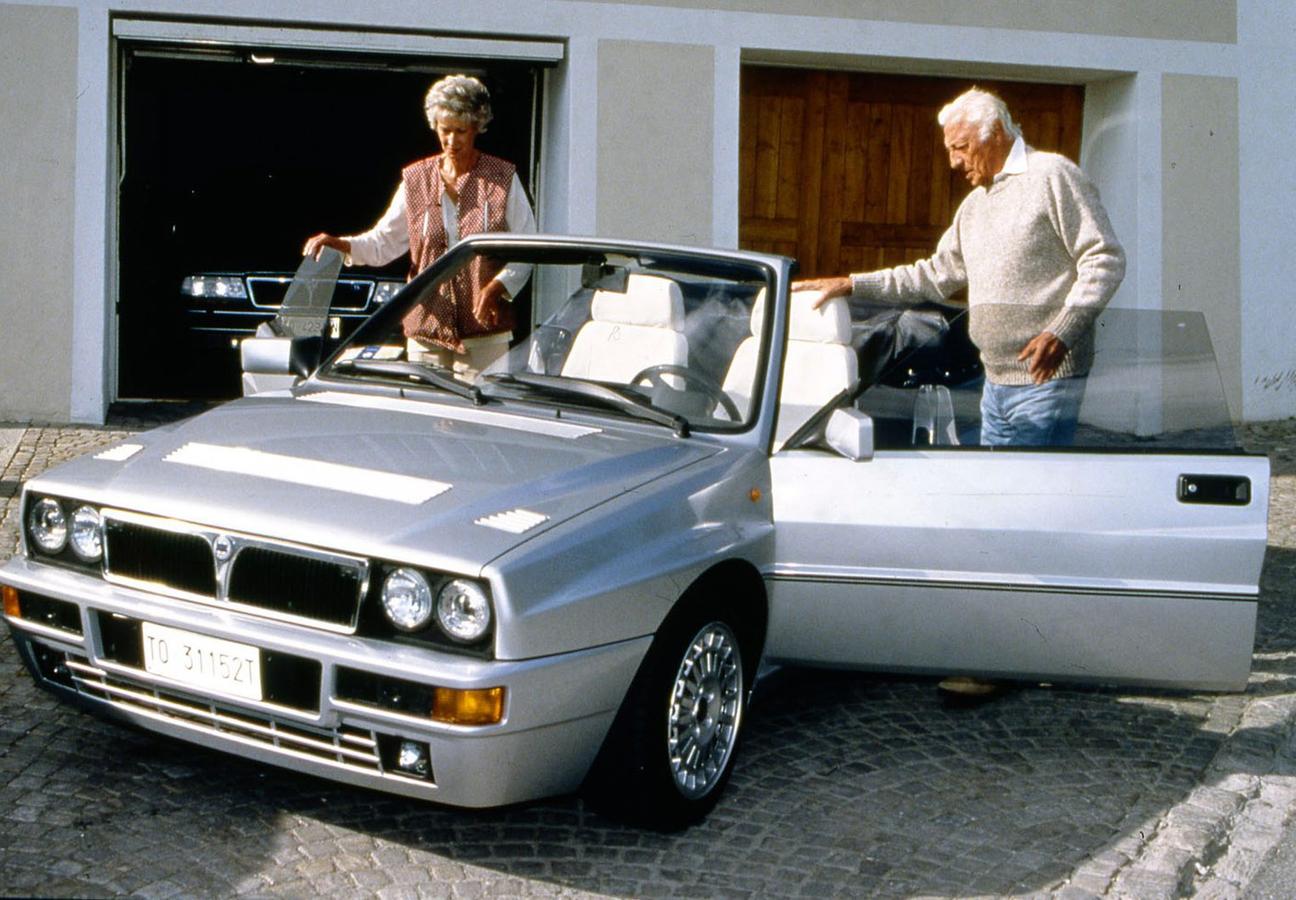
Let’s start with a car Agnelli kept until the end. L’Avvocato drove his one-off Lancia Delta Integrale until his death in 2003. And, though it now resides in the Museo Nazionale dell’automobile di Torino, you can see why he loved it. Commissioned to ensure he felt power at his fingertips and wind in his hair, this was a unique four-wheel-drive convertible — complete with two doors, 250 horsepower and a front design as immediately recognisable as the original.
1986 Ferrari Testarossa Spider

Courtesty of Artcurial
Perhaps the most famous car of the Italian industrialist, his 1986 Testarossa Spider was a present from Agnelli to Agnelli. He commissioned the one-off drop-top to commemorate his 20-year anniversary as president of Fiat — and the car was meticulous engineered by Ferrari, who solved the problem of fitting a folding roof around a mid-mounted, 5.0 litre, 12 cylinder engine in style.
A 12-metre mahogany yacht, Tomahawk

Agnelli’s first yacht, Tomahawk was a sight to behold. Bought in 1956, she sported an all-steel and mahogany construction and was stuffed to the gunnels with style. A 12 metre vessel built in 1939 to a Charles Nicholson design, Tomahawk was originally crafted to compete in the America’s Race. But Agnelli cooled on his investment in 1962, and sold it to his sister Susanna.
1993 Fiat Panda 4X4 Trekking

Courtesy of Aste Bolaffi
Now this may be our favourite of Agnelli’s many, many motors. Not only is it the most recent commission we’ve included on this illustrious list — it’s also one of the most unassuming. Humble and practical, the businessman wanted a trusty runaround to drive about St Moritz . The Panda fit the bill. Decked out in his preferred silver and blue colour scheme (like the Testarossa above), it’s a pocket-sized joy.
An 82-foot yawl, Agneta

A true Mediterranean legend. Agneta , originally launched in 1951, was bought by Agnelli in 1959 — who took her to Europe, where she remains to this day. With a Burmese teak deck, Canadian silver spruce spars and even a marble fireplace in the owner’s stateroom, this 82 foot yawl is perhaps the most decadent of all of Agnelli’s vessels. Our favourite feature? Those distinctive, rich red port-wine sails.
1950 Ferrari 166 MM
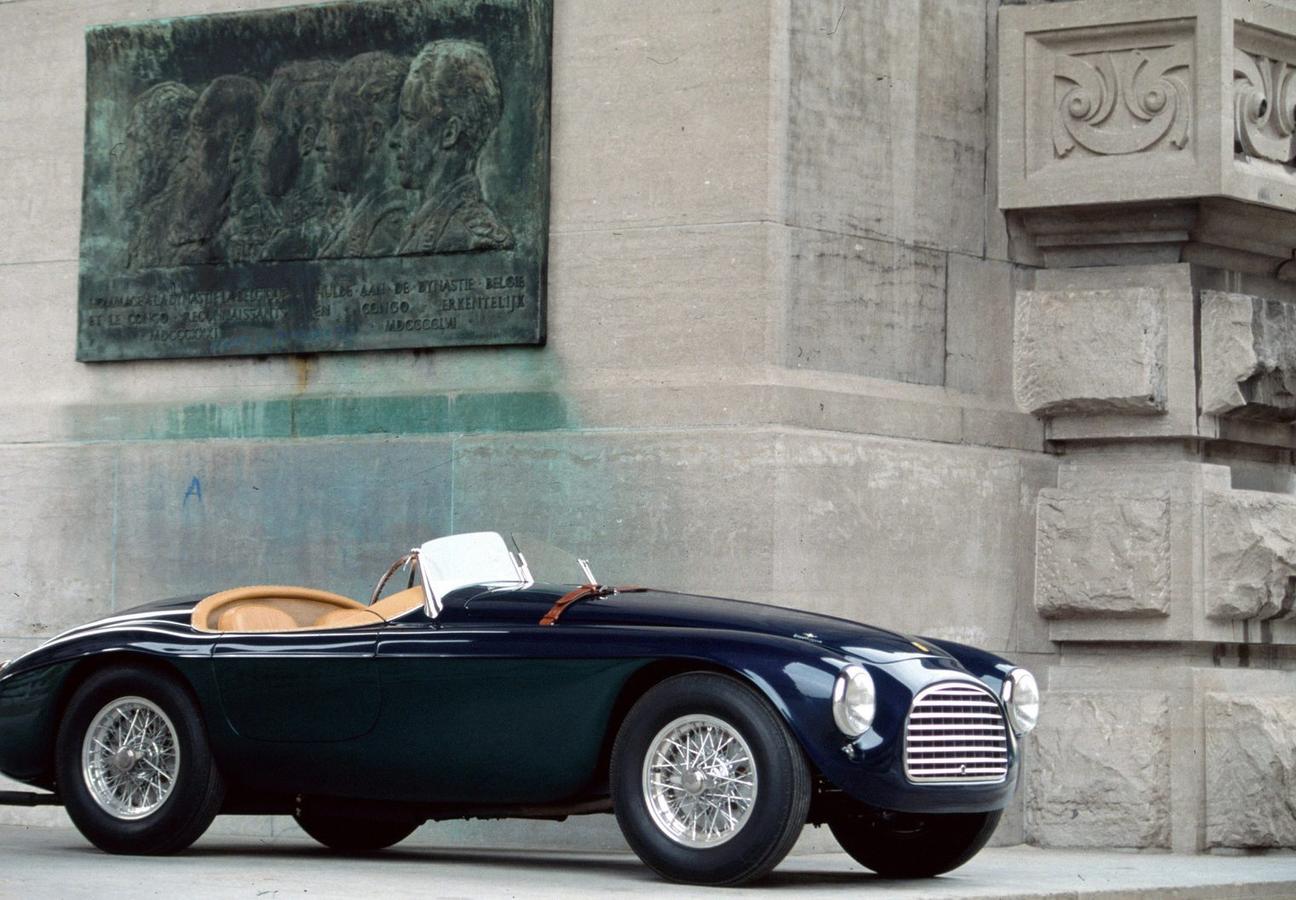
Courtesy of Concorso d’Eleganza
Back in 2015, this handsome 1950 Ferrari 166 won the Coppa d’Oro Villa d’Este. It’s a prestigious prize — and one which we’re sure would make its ex-owner, Agnelli, smile. Number 24 of only 25 ever built, this gorgeous little old Barchetta is a masterclass is simple styling. And it can back up that beauty under the bonnet; the same model won the 1949 Le Mans and Spa 24 hour races. No wonder he wanted it in his collection.
1971 Fiat 130 Familiare ‘Villa d’Este’

This is a fun one. The Fiat 130 sedan was the Italian carmaker’s flagship model for a time. And, in 1971, the brand used the car as the basis for the 130 Familiare estate. Only four were ever built — and all were owned by members of Agnelli’s family. This, the ‘Villa d’Este’, had imitation wood on the side — a style quirk borrowed from the US, and a large wicker basket to carry Agnelli’s skis in back from St Moritz.
A 37 foot speedboat, G. Cinquanta
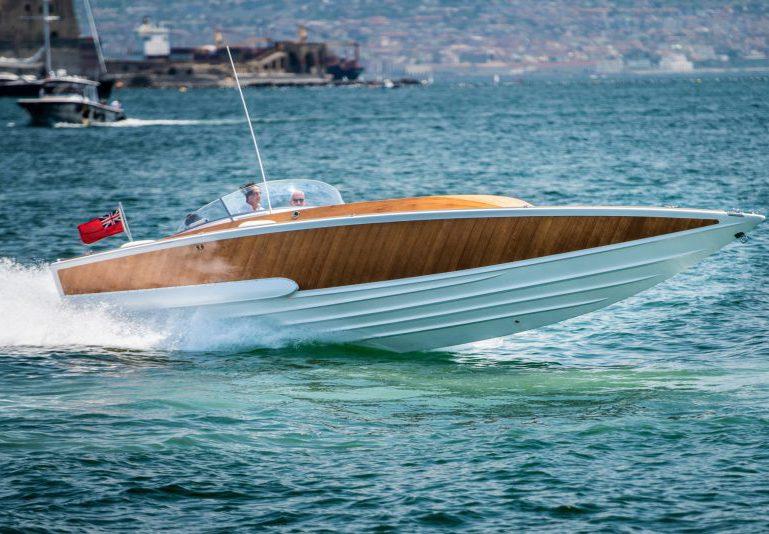
Remi Dargegen © 2020 Courtesy of RM Sotheby’s
In 1968, Agnelli took delivery of G. Cinquanta — a sleek, super speedboat designed by Sonny Levi. With four BPM V-8 Vulcano engines, the 37 foot cruiser never acted its age — and is currently up for sale through RM Sotheby’s 50 years later. No wonder the Italian loved it; with one of Levi’s signature ‘Delta’ hulls, a central cockpit designed by Pininfarina and 1,280 horsepower, what’s not to like?
1959 Ferrari 400 Superamerica S1 Pininfarina Coupe Speciale
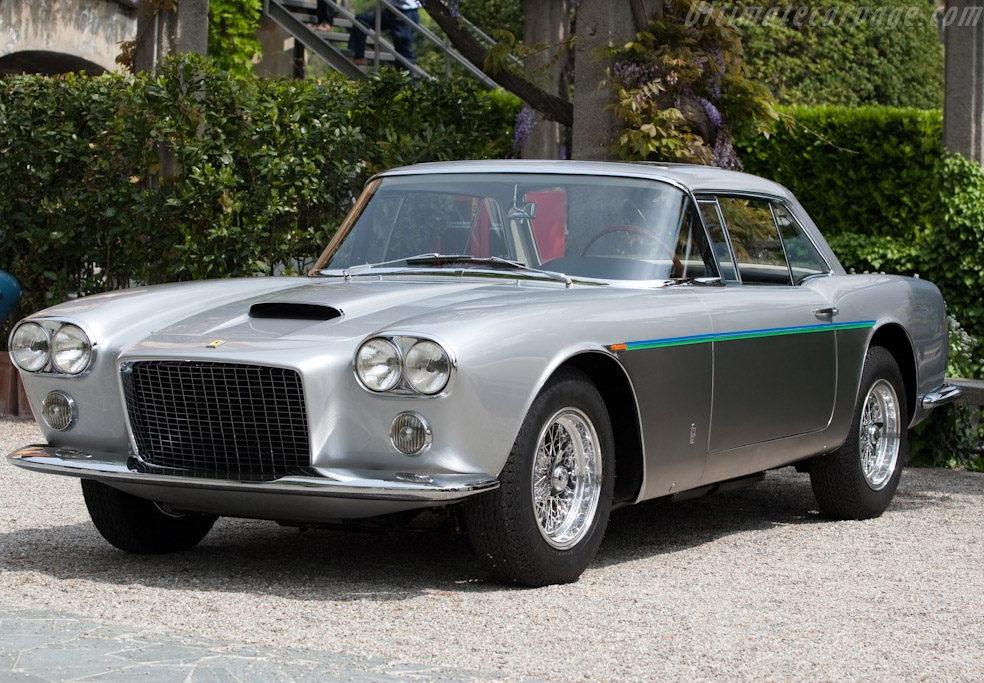
Soon after he became the chairman of Fiat, the 400 Super America was designed by Pininfarina and built specifically for Gianni Agnelli. With its type 163 engine and near-prototype status, it was the car that cemented his deep respect for the Ferrari marque, and was painted once more in his preferred colour scheme of blue and silver.
A 36 metre maxi yacht, Extra Beat
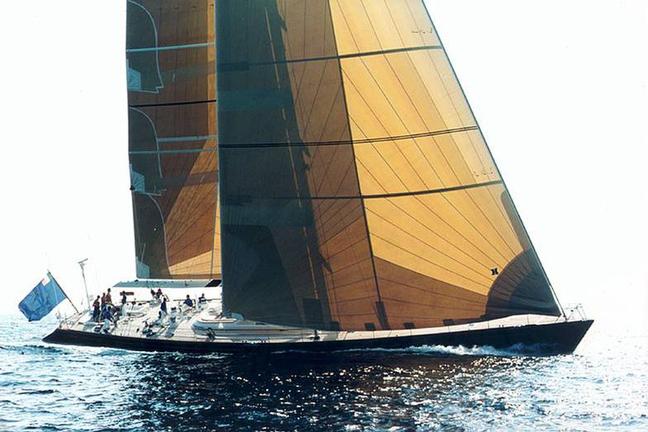
Imagine, for a moment, commissioning your first ever bespoke yacht — overseeing its design and construction — and then feeling a little unattached to it when it finally bobs into view? Because that’s what happened with Agnelli’s Extra Beat . Built in 1988 by Abeking & Rasmussen, the Italian industrialist was a little lukewarm on the 36 metre maxi yacht when it was finally delivered. Well, if you’ve got the money to try again…
A 93 foot high performance yacht, Stealth
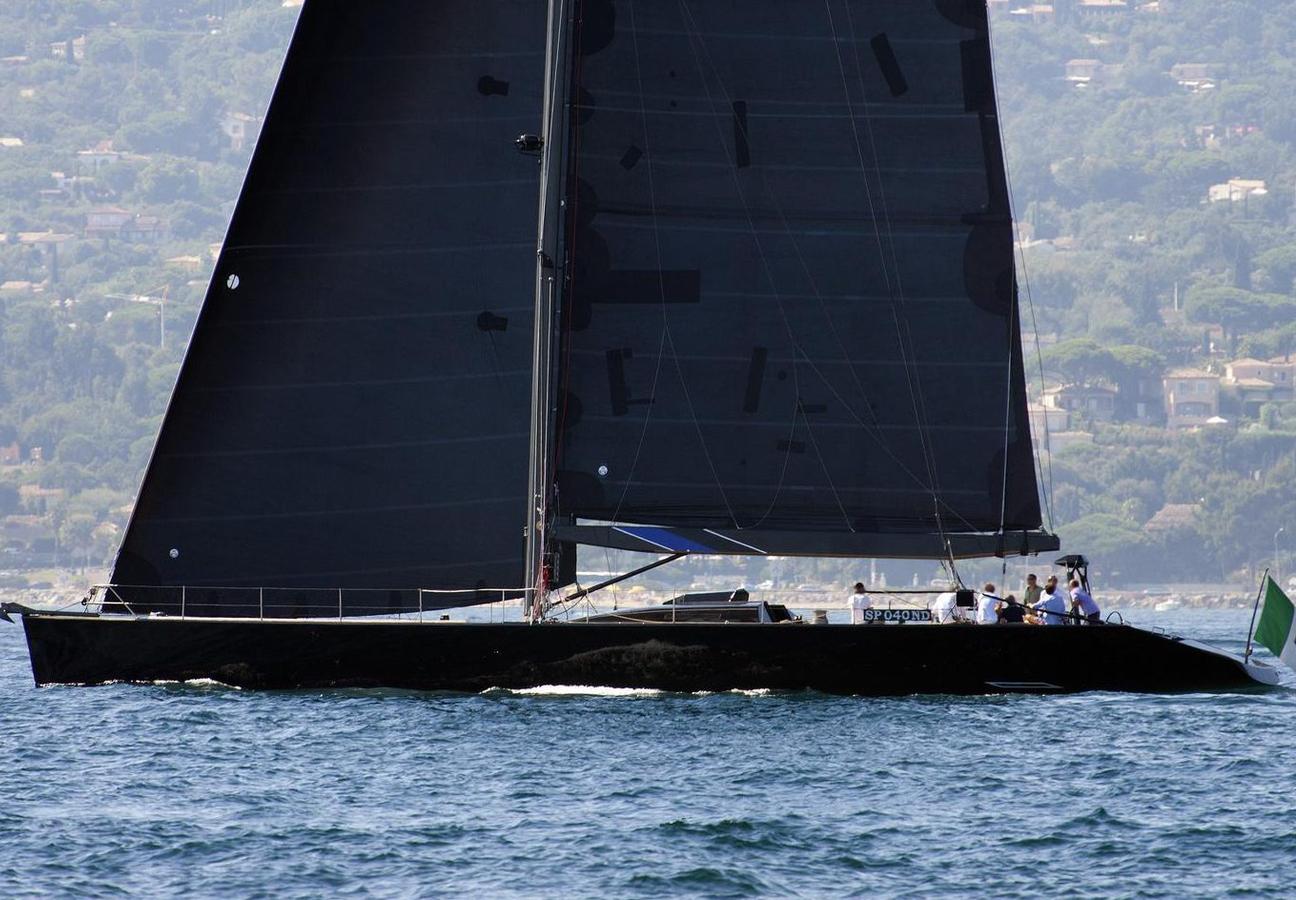
To make up for the disappointment of Extra Beat above, in 1996 Agnelli deferred to naval architect Germán Frers, who had created a revolutionary hull and designed Stealth for the businessman. Crafted from carbon fibre, the yacht sported white seats, black sails and a teak deck — the very height of opulence. Today, she is owned by Lapo Elkann, Agnelli’s grandson.
1966 Ferrari 365 P Berlinetta Speciale

And finally, to round things off, yet another Ferrari. But not just any Ferrari. Above, you’ll see one of only three 365 P Berlinetta Speciales ever made. Two went to Agnelli. And it’s not only the first road going mid-engined V12 Ferrari ever made — it also has a three-abreast seating arrangement, with the wheel in the middle. What else did you expect to round off the car collection of such a pioneering man?
Want more from Ferrari? Here’s why the Ferrari F355 Berlinetta helped supercars shift gear…
Become a Gentleman’s Journal member. Find out more here .
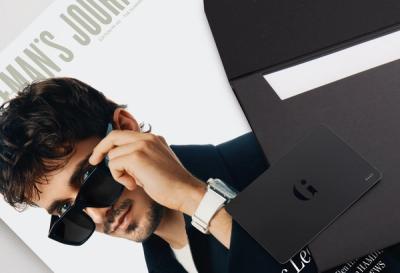
Become a Gentleman’s Journal Member?
Like the Gentleman’s Journal? Why not join the Clubhouse, a special kind of private club where members receive offers and experiences from hand-picked, premium brands. You will also receive invites to exclusive events, the quarterly print magazine delivered directly to your door and your own membership card.
Further reading

The RIBs that will take your summer to the next level

5 things you need to know about the Ferrari 12Cilindri

Auto-biography: Callum Mullin on his favourite modern classic cars
A free newsletter worth opening.
To receive the latest in style, watches, cars and luxury news, plus receive great offers from the world’s greatest brands every Friday.
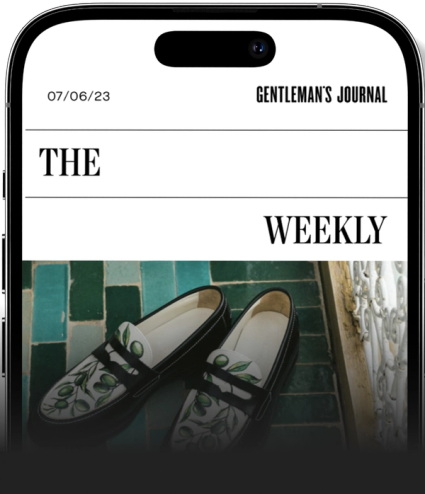
The Swedish architect, Reimers, named this yacht after his daughter Agneta.
She went through the hands of the Fiat mogul, Giovanni Agnelli, from 1956 to 1982 and in 1987 was bought by the Italian designer, Giuseppe Andolina. In 1990 she had a refit at the Cantiere Carlini in Rimini, Italy, where she was taken back to her original rig and the interior was re-designed with eye-catching woods. She is sailed well and always at the top of the classic Mediterranean fleets.
SHARE THIS:
- Yachts for Sale

Recently updated...

Write an Article
Covering news on classic yachting worldwide is a tall ask and with your input Classic Yacht Info can expose stories from your own back yard.
We are keen to hear about everything from local regattas and classic events to a local restoration or yachting adventure. Pictures are welcome and ideal for making the article more engaging.
With a site that has been created with the assistance of an international group of classic yacht enthusiasts we value your input and with your help we strive to make CYI more up-to-date and more informative than ever.
Please register and get in touch if you would like to contribute.

choose your language:
We’re passionate about Classic Yachts here at CYI, and we welcome submissions from all over the globe!
Captain, rigger, sail-maker or chef – if you’d like to write for CYI just let us know!
Email [email protected] to be set up as a Contributor, and share your Classic thoughts with the world.
ClassicYachtInfo.com has the largest database of classic yachts on the internet.
We’re continually working to keep it accurate and up-to-date, and we greatly appreciate contributions of any type. If you spot an error, or you have some information on a yacht and would like to contribute, please jump on in!
Don’t be shy…. Breeze on!
- Sell Your Yacht
- [email protected]
- +39 02 5656 9997

- Vendi la tua barca

Agneta : famoso yacht di Gianni Agnelli
Agneta lo storico yacht di proprietà della famiglia Agnelli; una barca da sogno, finemente arredata e che si vocifera abbia ospitato a bordo alcune delle più affascinanti donne del mondo tra cui Anita Ekberg, Rita Hayworth e Jackie Onassis.

L'Avvocato era un grande uomo d'affari ma anche un raffinato cultore della bellezza; per 25 anni ha navigato con Agneta, un classic yacht davvero spettacolare, caratterizzato da una distintiva vela color vinaccia e realizzata con i massimi standard per dar vita ad un vero e proprio gioiello. Questa barca a vela, nata nel 1950, è lunga 25 metri, presenta alberi in spruce e coperta in teak, costituisce una significativa innovazione con il risultato finale del facile raggiungimento della massima velocità con venti leggeri. Il progetto reca la firma di Knud Reimers , cui si deve il merito delle sue seduzioni, che traducono in materia il gusto del committente, amante delle cose chic. Il primo proprietario fu Mr. Wiberg, che mantenne la barca sino al 1959, quando passò nelle mani dell’uomo simbolo dell’industria italiana. Agnelli disputò con l’Agneta diverse regate, godendosi l'esemplare per più di cinque lustri.

La classe e l’eleganza emergono in tutti i dettagli di una composizione che profuma di stile, come un'opera d'arte.

IL RESTAURO DI AGNETA Nel 1987 Agneta è stata acquistata dall' architetto Andolina che decise di effettuare un significativo intervento di restauro interno ed esterno presso i cantieri Carlini di Rimini dove rimase oltre un anno e mezzo. Il nuovo armatore fece riportare l'armamento come era in origine in testa d'albero e studiò una parziale ridistribuzione interna degli spazi con il raggiungimento di soluzioni geniali. La dinette con il particolare disegno del pagliolato, i vetri a cattedrale e la cabina armatoriale sono stati realizzati da un solo artista del legno, Saverio Saotin. L'imbarcazoione dopo questo importante intervento di restauro è tornata all'antico splendore e dopo i successi dell'anno 2000 a Palma di Majorca, Imperia, Cannes e St. Tropez è stata venduta.

Notizie ed eventi
Glastron GT 150, la barca di 007 usata nel film "Vivi e lascia morire"
Riva Days Venezia 2024, l’Aquarama Byblos si aggiudica il Best in Show
Barca d’epoca ed equipaggio femminile: partita la stagione velica di Rabicano del 1967, portacolori del Museo della Barca Lariana
Trofeo Principato di Monaco, undici anni di vela d’epoca a Venezia
Marina Genova, concluso il 2° Classic Boat Show
Consenso e partecipazione per gli incontri d’epoca di Onda Classica a Santa Margherita Ligure
Le barche classiche ai Cantieri Navali di La Spezia
Nasce OndaClassica, incontro tra le barche d’epoca a Santa Margherita Ligure
“Tra Legno e Acqua”, aperte le iscrizioni al 9° Convegno sulle barche d’epoca. A Varese il 27 gennaio 2024
Barbara, cento anni di navigazione
Marina Genova, annunciate le date del 2° Classic Boat Show
IL 63° SALONE NAUTICO INTERNAZIONALE DI GENOVA CHIUDE A 118.269 VISITATORI (+13,9%)
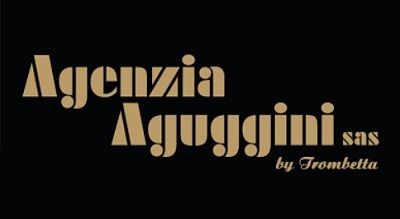
To revisit this article, visit My Profile, then View saved stories .
- What Is Cinema?
La Vita Agnelli
“I want to die like an old soldier, on his horse,” the great Italian automobile tycoon Gianni Agnelli told his niece Marella Caracciolo. This, as it turns out, was one of the few wishes denied him at the end of a brilliantly flamboyant, mercurial, and indulgent life, one navigated by turns with charm, cunning, vast wealth, and, above all, a ruling aesthetic sense that never failed him. It is fitting that as the fallen king of Fiat he should, the day after his death, lie in state in a blond-wood coffin in a room above Lingotto, the former Fiat plant in Turin, which was Agnelli’s hometown. Behind the coffin is a painting of the Madonna, and beyond this, one can see not only the blue hills that clasp the lovely city, with its 17th-century colonnaded streets, but also the flapping bedsheets and dark overalls drying on various balconies across the street.
In a few hours, at the funeral service in the pale Turin Cathedral (renowned for housing the famous Shroud of Turin), a young soldier will take out his trumpet and play “Silenzio,” which is how Italians honor their dead officers. Indeed, there is a subtle military undertone to the entire proceeding, as though a battle was imminent, which it is, in a sense—the empire is crumbling. “My grandfather was the scudo —the shield—for the Italian people,” explains Lapo Elkann, who is 26 and who was groomed, like his older brother, John, to manage the now precarious fortunes of Fiat.
All one hears now, however, are the sounds of shuffling feet as thousands of mourners—ordinary Fiat workers, many of Sicilian origin—file through until five in the morning. No one expected so many. One by one, they make the sign of the cross, then touch the coffin, garlanded by white peonies and roses, the handiwork of the fragile, black-garbed widow, Marella Agnelli, who stands by it. Hands are pumped so hard that some of the relatives will have blisters the next morning.
“ Coraggio, ” these workers murmur. Or, more ominously, “Don’t abandon us!”
The handsome chamber, sitting high up in the North Tower of Lingotto, is cool and brash, encircled by an outdoor track, where workers used to test new cars—the glamorous Fiat 509 of the 20s, for instance, and then the Topolino—for the company that is still the biggest private employer in Italy. Once, Fiat produced the most popular cars in Europe. It was Fiat and Agnelli who put Italy on wheels after World War II, turning it into the fast-paced, industrialized, style-crazed country it now is.
Agnelli, whose family fortune was once estimated at $3.1 billion, embodied that new Italy. His was the tanned, craggy face that symbolized its most recent renaissance, the postwar “Italian miracle,” which made it the fifth-most-important economic power in the world. He reigned over an empire that included not just Fiat but also Ferrari, Maserati, Lancia, and Alfa Romeo—the last ripped from the teeth of Ford in 1986. Into his fiefdom he swept Italian newspapers and an Italian department store, a large chunk of Club Med and a robotics firm, Chateau Margaux vineyards and tractor factories purchased from the United States, an aviation plant and a soccer team, an insurance company, and a slice of the publishing house Rizzoli.
There was nothing he couldn’t get and no one he couldn’t seduce, once he set his mind to it. During the Cold War, Agnelli, an unabashed lover of America, nonetheless blithely greeted Nikita Khrushchev and made deals with the Soviet Union; in the late 70s he did much the same with Colonel Muammar Qaddafi, at the very time Libya was quietly sponsoring terrorists. This, however, was never held against Agnelli for long, and he endeared himself to banker David Rockefeller and the Kennedys.
But his particular gifts for seduction and acquisition were most potent with women. He romanced Jackie Kennedy, who wanted to marry him, Pamela Churchill, who also wanted to marry him, and, at the height of her glory, the voluptuous film star Anita Ekberg, to whom he gave nothing more than transient affection and an inexpensive bracelet from Bulgari, which she proudly showed off to her dismissive Italian friends.
There are certainly plenty of wealthy and famous mourners who will come to pay their respects on this cold day. Silvio Berlusconi, the billionaire prime minister, for instance, will soon drive up in a German Audi, of all things (for which he will be roundly booed by the crowd of 100,000 who line the streets). The Agnelli relatives are frankly a bit worried about this huge outpouring. Will there be disturbances on this terrible day? Will one of the 8,100 about to be laid off from Fiat try to exact revenge? But the workers, it turns out, seem almost as grief-stricken as Marella Agnelli.
“ Il re, ” the Italian people called Agnelli—by which they meant the king not only of Fiat but of all Italy, and perhaps beyond. He had nothing in common with our bland American C.E.O.’s, interested solely in conjuring quicksilver fortunes—pallid figures, faceless until the day of their indictments. “He was a universalist,” Agnelli’s close friend Henry Kissinger explains. “He is hard to figure out by comparison with some of the people you see in this period. He was an Italian patriot and a great European and an Atlanticist and a great believer in friendship with America. And people will tell you all that’s incompatible, but it’s not.”
Now Agnelli is dead at 81, after a long and painful struggle with prostate cancer. And, frankly, there is no one to take the king’s place. His world has died with him. Fiat is in a bad way, bleeding money, hit by mounting debt—once estimated at almost $14 billion—and falling sales. Last year it suffered losses totaling almost $4.6 billion. Certain Agnelli intimates believe Fiat Auto will likely have to be sold off. It was something Agnelli would have done anything to prevent—and in fact did, to the sorrow of some of his relations, who are now considerably less rich as a result. By January, Fiat shares had dropped about 80 percent since 1998. Fiat debt has been downgraded to junk status.
“He didn’t care that everyone’s assets were going down,” says his niece Priscilla Rattazzi. “He cared that people in Turin kept their jobs. This is an Italian thing. Italians don’t fire 10,000 people. He definitely didn’t want to see the writing on the wall.”
“He would like to be remembered as the man who did not sell out,” his nephew Lupo Rattazzi, 50, explains. “He used to say, with scorn, ‘Look at those English automobile companies, like Rover, Rolls-Royce—they sold out to everyone!’ He felt several families in Europe had surrendered. He wanted to keep Fiat in the hands of the Italians—and the Agnellis.”
So, as the years passed, Agnelli preferred to ignore the brutal economic realities of the auto business, concentrating instead, along with his wife, on other areas of existence. You have only to enter one of his many homes to see where his heart was. The rococo Villar Perosa—the family estate, with its view of the Italian Alps—where the gallery of chinoiserie is lined with light floral silks and green-and-gold painted panels of leaves and birds. Or the Villa Frescot, on a hill overlooking Turin, its rooms designed by Renzo Mongiardino and its Francis Bacons propped willy-nilly against basement walls. Or the simple lines of an old monastery on Corsica that the Agnellis converted into a country house.
“You say, ‘My goodness!’ You can’t believe these are the houses of very rich people,” says Oscar de la Renta. There are, in fact, Louis XVI tables and Géricaults, but next to them, he says, “also masses of wicker, the cheapest things you can buy.”
But members of the family know how much work and trouble went into creating such deceptively simple effects. “You see, everything they did had to be lovely and perfect—it was part of their own myth, the one they created and played out their whole lives!” says Marella Caracciolo. “The whole cult of aesthetics,” she continues, “of having the best life. And the best food. And the best art. And the best wine. Everything had to be the best in the whole world!” And her aunt, Marella Agnelli, “played along with this completely. The idea of creating the perfect home, the perfect flower arrangements, every piece of linen—perfect.

“And all that’s over,” concludes the niece. “That’s the world that is over.”
One can see remnants of it, though, simply by taking a glass-enclosed elevator to the floor above the room with the coffin at Lingotto. Here, in a small museum, lies an assortment of perfections unrelated by time or country of origin: a Modigliani voluptuary wearing only a sly, secret smile; two robust bathers by Canova; a portrait by Renoir of his delicious young wife, bare-breasted. These works, donated by Agnelli to Turin, are housed in an airy construction designed by Renzo Piano. Above it is a flat sun-drenched roof called a tappeto volante —a flying carpet.
Indeed, of all the images that come to mind when one thinks of Agnelli, the flying carpet is the one that is perhaps most apt. He never could stay in one place, never could bother seeing a movie in its entirety, never finish a book, or—most of all—confine himself to one woman.
He was in certain ways a shy, remote man, whose armor of burnished cynicism kept everyone at a distance from his personal drama. This is made quite clear by Cardinal Severino Poletto during the funeral. Not long ago, he explains, the two men met for the first time.
“What shall I call you?” the cardinal asked Agnelli.
“You can call me ‘Avvocato,’” replied Agnelli, referring to his most popular nickname, the one everyone in Italy, even close friends, called him. It means lawyer—an interesting choice, since, although he went to law school, he never passed his final exam. “It is,” the dying Agnelli added, a note of irresistible candor creeping in, “my stage name.”
When Susanna Agnelli, known as Suni, opens the door to her Roman apartment, with its view of the savage horses of the Piazza del Quirinale, all one sees is her older brother. It is stamped there on her face—the defiant nose, the cast of the jaw, the cool, appraising look in her eyes. A tall, imposing woman of 80, she was Italy’s first female foreign minister, in the mid-1990s. But she was above all the younger sister of Gianni, whose own apartment is just a few floors below hers.
She seems to be expecting him still to drop in. In her view, he was, as her son Lupo puts it, “the man who could do no wrong, basically. An idol-worshiping relationship.”
Her first words confirm this, while laying open—as she clearly means to—all his flaws. “The only thing I can say about my brother, really, is that he was a perfect brother.” She holds up a hand. “That doesn’t mean at all that he was a perfect businessman or that he was a perfect husband or a perfect Christian or a perfect financier, just a perfect brother.” In fact, “we understood each other so well he didn’t need to speak. Nor did I need to speak. Just understand each other.”
In any case, I venture, Gianni never spoke much about himself in a personal way, considering it, perhaps, undignified.
“Not undignified. Inelegant.” This is followed by an unexpected bark of laughter. Then Suni’s eyes fill with tears.
From childhood the two had essentially each other. The rest of the family, however important, were, by comparison, bystanders. There was Giovanni, the imperious grandfather, a friend of Henry Ford’s, who founded the Fiat company (known then as Fabbrica Italiana di Automobili Torino) with a small group of investors back in 1899. There were other siblings: Clara, Maria Sole, Cristiana, and the youngest, Umberto, who was 13 years Gianni’s junior, and Giorgio, who died at 35. There was a cold and difficult father, Edoardo, who was killed in 1935 in a seaplane accident when a propeller cut open his head. Gianni was 14 at the time.
And there was an unrestrained, barely domesticated mother, Virginia Bourbon del Monte—half American, the daughter of a prince, and a great beauty. But impulsive and defiant. Inside her 30-room palazzo, Virginia slept on black satin sheets; all around her were tapes-tries, statues, indifferently painted views of Venice, and a large, steamy portrait of someone she insisted was Queen Christina of Sweden (but who likely wasn’t).
“My mother was very American, in the sense that she was not the usual kind of mother you would have had,” says Suni with a stab at understatement most exceptional in her. “I think,” she adds thoughtfully, “because of her American blood.”
You mean because your mother was so flighty, I suggest.
“Yes.” The old lady nods briskly.
In fact, after her husband’s death, Virginia took as her lover the writer Curzio Malaparte, in an affair so flagrant that it prompted the grandfather Agnelli to seize custody of her children. In despair, Virginia appealed to, of all people, her father-in-law’s chief ally, Mussolini. It was a shrewd and successful move—Mussolini liked to give orders, even to old Agnelli, who was a card-carrying member of the Fascist Party, a purely commercial decision in his view. Their alliance was to make Agnelli’s fortune and earn him the title of “senator for life” from Il Duce. The Italian military became a robust consumer of Fiats when World War II broke out, and there were, in addition, numerous meetings between Fiat officials and the Wehrmacht, which also turned into a valued customer.
A few years later Virginia died in a car accident, her neck broken. Beside her, according to one biography of Agnelli, was her chauffeur, trouserless. Gianni, who was 24 at the time, set up house in Turin with Umberto, just 11, and their English governess. Indeed, the older brother became, as Suni Agnelli tells me, Umberto’s surrogate father. One month later, in December 1945, the prominent grandfather, too, died, by this time utterly friendless, embittered, and roundly despised. Mid-war, Italy had executed an expedient turnabout, fastening its allegiance to the victorious Allies, and consequently the old man’s mercantile transactions with the Fascists were recollected with disgust. As Gianni would later recall with considerable emotion, “Nobody was there at the funeral except family members.”
The results of all this family upheaval would be so devastating and far-reaching that their effects can be felt to this day. Umberto would grow up “always in the shadow of this charismatic person, Gianni,” according to a family confidante. He is hardworking and newly prominent these days, indeed is now the Fiat chairman. But until his brother’s death, Umberto’s role in the parent company was subdued.
A decade ago, Umberto’s desire to attain the chairmanship his aging brother wished to relinquish was thwarted by the dubious banks. “He was very resentful,” continues the confidante. “Always the little brother who never found his own way, basically.” (Six years ago, Umberto was dealt a far worse blow: his talented son, Giovannino, the designated heir to the empire, died at 33 of stomach cancer.)
As for the lingering memory of the flighty, half-American Virginia, “Gianni never spoke about his mother—well, not to me,” says Nicola Caracciolo, Agnelli’s brother-in-law. “I think he thought his grandfather was right to take the children away.”
So, did Gianni Agnelli, recalling perhaps the antics of his own mother, secretly despise the many women he seduced?, I wonder.
“Maybe there was something like that,” Caracciolo concedes.
As it turns out, there was a lot of the grandfather in young Gianni; he was every bit as opportunistic as the old man, only infinitely more farsighted. In the winter of 1941, at 22, he distinguished himself fighting for Mussolini on the Russian front, was, in fact, wounded twice. By 1943, however, he turned up, speaking wonderful English, as a valued liaison officer for the Americans.
“It was just, you know, normal; it was nothing exceptional,” explains his sister Suni, who had herself been a nurse on an Italian hospital ship and then drove an ambulance for the Allies. No need for long discussions between her and Gianni on the interesting subjects of allegiance or Fascism. The world had changed. “And then we switched sides,” she says simply.
On the whole, Gianni was pleased with his decision. In the first place, America was proving very successful, a quality Agnelli always respected in countries and people. In the second, says Suni, “Gianni was extremely grateful to the Americans for having saved Italy. And that is something he repeated always: Without the Americans we wouldn’t exist.’”
The old senator had said, You behaved bravely. Take a few years off,’” Agnelli’s old friend Roffredo Gaetani explains. He, too, invariably refers to Agnelli as “l’Avvocato,” despite their long association (as in “I was and will always be proud to call myself one of l’Avvocato’s men”). “He took a few years off,” he continues, “and then a legend was born.”
In fact, “a few years” is a considerable understatement. Having fought hard, young Gianni was ready to play hard, and he spent the two decades after 1945 deftly avoiding steady work. While Vittorio Valletta, a brutal manager, ran the car company, Gianni went straight to the South of France, where he dropped $100,000 on La Leopolda—a 28-room villa originally owned by Belgium’s King Leopold—and equally impressive amounts on gambling and recreational drugs, including cocaine.
Everyone in those newly carefree days was either at La Leopolda or in the vicinity: the playboy Porfirio Rubirosa, the reckless racecar driver Alfonso de Portago, the movie tycoons Jack Warner and Darryl Zanuck, the young Kennedy’s, the Sicilian prince Raimondo Lanza, described by a family friend as “incredibly mad and dashing and Gianni’s mentor.”
“I think Gianni was discovering life,” says Countess Marina Cicogna, an old friend, who saw a lot of Agnelli in 1953, when he was receiving an annual allowance of $1 million. This enabled him to arrive in style, as Cicogna recalls, with “a very extraordinary-looking motorboat and cars.” The young man was in hot pursuit of Cicogna’s friend, the actress Hedy Lamarr. “It was a great time because you didn’t have all the media attention you have now,” she observes. “And then all the Greeks started showing up in the South of France,” by which she means Stavros Niarchos and his boat the Eros. Also on board were Aristotle and Tina Onassis, the latter soon to catch the eye of Lanza. “Easy, fun, and glamorous, you know,” Cicogna concludes. “Fun and games, nothing terribly serious.”
Fun and games, however, was not at all what flame-haired Pamela Churchill, the former daughter-in-law of Winston Churchill, had in mind when she set her blue eyes on Agnelli. He was an intriguing choice: a handsome, dark figure with an eagle’s probing gaze. He also had a fastidious, if quirky, sense of style: his gold Cartier watch fastened over his shirt cuff, the collars unbuttoned on his crisp shirts. She was a woman who played for keeps (as an assortment of men, including film producer Leland Hayward and American statesman Averell Harriman, would later discover). And after she moved into La Leopolda, it was her intention to turn Gianni, who, as Cicogna explains, “was a young man who hadn’t had much international experience,” into a second husband.
To this end, no effort was spared: introductions were made to important associates, among them an invaluable Franklin D. Roosevelt Jr. Junior got the Fiat distributorship for North America, according to Pamela Harriman’s biographer, Sally Bedell Smith, and Fiat, in turn, got a huge postwar loan from the U.S. government. And Pamela herself underwent a remarkable transformation, converting from Church of England to Roman Catholic—and, even more to the point, from gauche to smart.
“I saw Pamela before she became elegant. She arrives in Capri, which is very informal, you know—you wear slacks and espadrilles at the most—and she is looking terrible in big lizard high-high heels and a terrible, huge amethyst necklace around her neck,” recalls one Agnelli friend. “Well, within one year after she meets Gianni, she is wearing Balenciaga and magnificent jewelry. She is,” this friend observes succinctly, “the only woman that Gianni ever spent money on.”
The problem with Pamela’s matrimonial ambitions was twofold. First, Gianni’s sisters couldn’t stand her. “I never thought she would have been a good wife for Gianni,” says Suni, who decided her brother needed an Italian wife of considerably more limited amorous experience and acquisitiveness. The second difficulty was Gianni himself. On August 20, 1952, he was casually embracing a gorgeous 21-year-old named Anne-Marie d’Estainville at La Leopolda when Pamela walked in. Highly incensed, she hurled at the couple an object which d’Estainville would later vaguely describe as “something.”
The pair retreated to Agnelli’s Fiat station wagon. Gianni, reportedly high on cocaine, drove down the Lower Corniche at such an alarming speed that near the Cap Roux tunnel he slammed straight into a butcher’s truck. His right leg shattered in seven places. From then on it was never the same. True, Agnelli continued to pursue life as ardently as ever—sailing boats, skiing, chasing women—but his leg remained encased in a permanent brace, never wholly functioning, and he spent many years on painkillers.
“Sometimes he would walk over something. It would cut him, and he wouldn’t know, because he had no feeling in the foot,” says Cicogna. “He was a very brave man. I never heard him once complain.”
Another thing changed as well. The Agnelli sisters prevailed upon a young friend, Princess Marella Caracciolo di Castagneto, a former Vogue model and a winner of the Miss Florence title, to visit their dear brother, convalescing in the hospital.
The girl was in many ways a perfect applicant for the role they had in mind. Marella’s Midwestern mother and grandmother were expatriates of considerable intellectual breadth—Henry James and Ezra Pound had pride of place on the shelves of the Florentine palazzo they had acquired. Her paternal lineage was impeccably Neapolitan—albeit, as Marella’s brother delicately puts it, “not very rich, regrettably,” their great-grandfather the Duke of Merito having steadily sold off his land near Puglia to pay for “balls and horses and galas.”
Moreover, Marella was no Pamela-style adventuress. Her father was a diplomat, and she had grown up in a fine Roman house in Trastevere, directly across from the more impressive medieval palazzo owned by the Agnellis. She had a melodic voice and a swan’s neck, and she fell wildly in love with the injured playboy.
As for Gianni, it’s hard to say. He had grown into a cynic, not one to mistake ardor for enduring affection. “Yes, I know,” Suni says mildly. “My sisters and I used to say to each other, ‘So, who do you think Gianni was really in love with?’ It’s difficult to say.”
So who was his great love?, I ask.
“I’d rather not say.”
‘In love?” Gianni bellowed at Suni the first time she suffered such an affliction. “I thought only maids fell in love!” Nonetheless, he married Marella in November 1953, at which time she was 27—and three months pregnant.
Pamela was abandoned, certainly, but not without parting gifts. Agnelli gave her a Paris apartment and a Bentley. For her part, Marella got one of the most difficult husbands in a nation renowned for difficult husbands.
Did you think your older sister made a good match when she married?, I ask Nicola Caracciolo, who is 71.
“Mmmm … yes and no,” comes the bleak response. “I was a bit concerned how things would turn out. In some ways, it was a very, very good match. In some other things … ” His voice trails off.
You mean Gianni was wild, I say.
“Exactly,” says Caracciolo. “My mother was worried. She asked, ‘Are you sure?’”
How comfortable Marella remained with her decision is open to question. For much of her marriage she hadn’t a moment’s peace, worrying about Gianni and his women. She poured out her anxieties to, among others, the advice columnist Ann Landers (whose comment on the subject, once out of earshot of Marella, was “That’s how Bulgari stays in business”). When Marella was pregnant with Margherita, her second child, Agnelli took up, it is said, with Princess Laudomia Hercolani, an Italian noblewoman who “had the social and the intellectual position to be a threat,” says a friend. The princess herself has denied this. However, a close friend says, “I think that was the most difficult moment in their marriage.”
She was far from the only woman who appeared by his side. Anita Ekberg came and went. The actress Silvia Monti, who ultimately married industrialist Carlo de Benedetti, was, say friends, also seen with him. Jackie Kennedy went sailing with Agnelli in 1962—MORE CAROLINE, LESS AGNELLI, read the angry telegram Jack Kennedy sent his wife on this occasion, which was notable for a fair amount of kissing, caught on film by the paparazzi. And Kennedy’s son, John, it was whispered in malevolent circles, looked a lot more like Gianni than Jack.
Nor did Jackie’s interest subside over time. “At a certain moment, the freshly widowed Jackie Kennedy went around looking for a rich husband, and she went to Turin and wanted to marry him,” Gaia Servadio, once a very close friend of Agnelli’s, tells me. “This was before Onassis came along. I know it’s true. She wanted him to divorce and marry her.” And, Servadio adds, “it would have been ideal. In a strange way, he would have liked to have her. He didn’t, though. Well, because things are like that in this life.”
Marella spent a fair portion of their wedded life trying to undermine her husband’s libidinous desires. “Marella always found ways to keep Gianni under check,” reports an old friend. “In the early years of their marriage he had a bachelor pad with a cot bed in the Grand Hotel in Rome. Marella moved a lot of furniture and a big bed into this bachelor pad—the kind of stuff that made him uncomfortable, so it would no longer be so much of a bachelor pad, if you see what I mean.”
Family members marveled at Marella’s forbearance. It is absolutely true that Italian husbands permit themselves far more leeway in love than their American counterparts, and their smart wives tend toward indulgence, or at least a blind eye. But even by Latin standards Agnelli’s amorous excursions (never highly rated by his partners, according to Roman gossip) were considered excessive.
“When I was a kid, I did suspect she would divorce him,” recalls Lupo Rattazzi, Suni’s son. “Someone so unfaithful … I thought, How else could it end but divorce? But that was because I didn’t understand the depth of the relationship.”
And, indeed, the marriage endured, but not without significant damage to everyone, friends included. It was observed, for instance, that “Marella also had tremendous charm—like Gianni,” as one friend notes. “But I would say that in front of Gianni she was so intimidated. And so nervous. And always edgy.” Another damaged soul was the couple’s firstborn, Edoardo, who, says a friend, “felt neglected by his father.” The young man eventually killed himself. “Marella,” says another friend, “was more a wife to Gianni than anything else. Her greatest concern was her husband.”
Intimates who welcomed Gianni to their houses when he arrived with what they called “a fling” were swiftly told off by Marella, who had a wounded woman’s uncanny knack for discovery. “Gianni comes to my house with a girlfriend. He arrives and says, ‘Where’s the spaghetti?’ Well, what am I supposed to do?” wails one former friend. “But Marella—we never really repaired the rift after that.”
So these friends, like it or not, had to choose sides.
“In the beginning it was Marella and Gianni I was friends with,” says London columnist Taki Theodoracopulos, a longtime member of the Agnellis’ inner circle. “But I think somebody like me who did the same bad things as Gianni—it’s difficult to stay friendly with both. So I was a Gianni friend for the last 45 years.”
“Tell me what happened last night,” Gianni would exhort Taki. “Were the tarts pretty?”
“You shouldn’t get the wrong idea—they weren’t whores. He always called all girls tarts,’” Taki explains. “That was just one of his Agnelli-isms.”
Fiat was doing just fine without Agnelli at the helm, when it was run in the 1950s and early 1960s by the ironfisted Valletta, who kept the unions at bay. Valletta was five feet one and produced cars to match. Under his careful watch, the minuscule Fiat 500 dominated the Italian market, mainly because of its price.
“Basically this car, when it came out, cost 500,000 lire [around $500],” explains the political scientist Franco Pavoncello, who is dean of Rome’s John Cabot University. “The issue of quality was not really as important as the issue of availability to the masses.” (The Fiat 500 had other fine qualities as well: during years of housing shortages “many of us first kissed a girl in a Fiat Cinquecento” was Berlusconi’s delicately worded recollection.)
But in 1966, when Valletta was 82 and about to retire, Agnelli announced that he was replacing him. Agnelli was 45 at the time, and it was the perfect moment: Fiat produced 1,741,000 cars, 64,800 trucks, and 50,558 tractors that year—quantities that amounted to 6 percent of the world market. It had just unveiled the best-selling Fiat 124 and the dynamic little Dino Spyder.
“I started at the top,” Agnelli used to say, with characteristic irony. But Italy wasn’t big enough for him. That same year he opened a car plant at Togliattigrad in the Soviet Union, destined to produce 660,000 cars a year—and the best part of the deal, as far as Agnelli was concerned, was that the Italian government helped finance the project.
Within two years Fiat factories were opening all over Eastern Europe, where labor was cheap and ornery unions nonexistent. Nor would he stop there: in years to come Fiat popped up in Argentina and Brazil. So delighted was Agnelli by the degree of Fiat’s worldwide incursions that he felt duty-bound to proclaim (this, alas, 18 months before Soviet tanks rolled into Czechoslovakia in 1968) that it was his “firm belief” the Cold War was over.
Agnelli’s firm beliefs generally coincided neatly with his expansionist business plans, but it is also true that he had a passion for internationalism—if not for accurate prediction. There were certainly occasions—his championship of a unified Europe was one—when he shelved self-interest. A European Union, after all, spelled the certain end of protectionism in Italy, and with it the equally certain advent of competitive foreign cars.
“He always gave the impression of having a clear vision of the future,” says Ferdinando Salleo, Italy’s ambassador to the United States. “I was around when he was very instrumental in organizing a gigantic Italian economic mission to the then Soviet Union to strengthen Gorbachev.” Salleo was impressed—an entrepreneur who cared about something more than instant profits? Who worried about the fate of Mikhail Gorbachev?
In a delicate pause in conversation it is obvious the ambassador is offering implicit comparisons with American tycoons. “That kind of family capitalism which is typical of Italy, it may have good sides and bad sides, but at least it gives rise to this type of leadership and vision. It was here in the old times, people like J. P. Morgan and old Rockefeller and Andrew Mellon.” Smiling, he draws on his cigar. “I don’t say they were angels.”
No one ever observed Agnelli wearing a halo. In November 1976, recalls an old friend, she found herself lazily discussing with l’Avvocato the idea that rich men have the power to order assassinations, and Agnelli, as interested as always in other people’s notions, asked, “Which bad people would you like to see murdered?”
“Qaddafi,” came the immediate reply. “Because he’s so terrible.”
Agnelli looked thoroughly amused, but his tone was thoughtful. “Even bad people can be useful,” he casually observed.
Within days, this friend recalls, “I find out Qaddafi saves Fiat by buying a good portion of it.”
Fiat was going through one of its periodic crises just then, desiring greater expansion but paralyzed by a lack of fresh capital and devastated by skyrocketing oil prices. Who wanted to invest in Italy? The left was terrorizing the country—bands of Red Brigades abducting and murdering industrialists to such an extent that Agnelli let it be known that he had a cyanide capsule fitted under one of his teeth (which no one these days seems to believe). In any event, l’Avvocato was more than ready to deal with the Devil.
“Would one of you like to try and guess what I have to say?” a delighted Agnelli asked members of the press in 1976, right before providing them with fresh headlines: almost 10 percent of the Fiat auto group had just been sold to the Libyan dictator in a $415 million deal. This sum was as interesting as the name of the violent new partner, since, as Alan Friedman points out in his 1989 biography of Agnelli, “Libya was offering more than three times the price it would have paid had it simply bought Fiat shares openly on the Milan stock exchange.” In return, Libya was to get two seats on the Fiat board and a seat on its executive committee.
Consternation and outrage resulted, needless to say. In vain did Agnelli’s men insist, as Furio Colombo (then chairman of Fiat USA) does today, that Libya had no hand in Fiat policy and that there was “no moment” when this was even contemplated. Qaddafi was by no means as active in terror networks as he would soon become, but he was well on his way, actively helping Middle Eastern militants. Why, Washington wondered, did the “wild man of the Middle East,” as Anwar Sadat of Egypt called Qaddafi, need Fiat? (There was at least one answer: Abdullah Saudi, then the chairman of the Libyan Arab Foreign Investment Company, claimed his country was interested in a lot of what Fiat had to offer, armaments included.)
This matter didn’t seem to concern Agnelli. He was totally unrepentant about his maneuver—an attitude maintained to this day by his nephew Lupo Rattazzi. “That deal was the most brilliant that we’ve ever done,” he says. It was an era, Rattazzi recalls, “when nobody wanted to touch Fiat.” Besides, as far as the car manufacturer was concerned, “those Libyans behaved fantastically”—meaning they didn’t attempt to control company policy. “Qaddafi was probably a lunatic dictator, but, look, somebody was rescuing us for just a minority position!”
Around the time Qaddafi was suspected of having had a hand in the 1985 bombing of Fiumicino Airport in Rome, however, the administration of President Ronald Reagan proved considerably less ecstatic about the alliance. In May 1986, Secretary of Defense Caspar Weinberger intervened personally, blocking a Pentagon order from Fiat. That got Agnelli’s attention. “If Fiat is blacklisted, that could be a big problem,” he said. “Sure, I’m concerned.”
And within no time at all Fiat bought back those Libyan shares for $3.1 billion, thus giving the Libyan dictator more than a $2.5 billion profit.
“If you consider Qaddafi, he made good money,” Colombo concedes, gently comparing it to “the way you buy an apartment at $100,000 and sell it at $1 million.” Nonetheless, he adds, the payoff to Qaddafi “was not a burden to the company.” (As indeed it was not. Mediobanca, a uniquely Italian bank, beloved by the local oligarchy, gave Agnelli’s holding company more than $1 billion to buy out Libya, at the miraculously low interest rate of 2.6 percent.)
“It was a necessity at that moment,” Suni declares coolly, and then she delivers perhaps the truest reason for her brother’s 10-year marriage to a brutal dictator. “Yes, to get the infusion of cash. But without having the whole of the left of Italy against us.”
Nor are such rationales confined to family. Criticism of Agnelli in the press of his home country was almost nonexistent. He owned the Turin daily La Stampa, and his company owned a fair portion of Italy’s largest-circulation daily, Corriere della Sera, in either of which one would have been hard-pressed to discover a discouraging word. “That would be ridiculous,” says Colombo, who used to be a columnist for La Stampa and is now the editor of another well-known newspaper. “Like asking if The New York Times ever published something attacking the Sulzbergers. No, of course not!” In addition, he adds, many Italian journalists get substantial discounts on Fiats.
Across the Atlantic, David Rockefeller appears equally sympathetic. “I felt it could have led to a constructive commercial relation with Libya,” he says blandly. His good friend, after all, “was a pragmatist. Absolutely.”
Agnelli himself was particularly proud of this attribute. “I am always on the side of the government,” he told his brother-in-law. Any government. He wasn’t picky.
‘I hope you capture the fact we are dealing here with someone exceptional,” says Henry Kissinger. He met Agnelli more than three decades ago, at which time Kissinger was “determined not to be charmed.” This resolution didn’t last long.
Being an Agnelli friend meant discarding mere existence, with all its tedium and demands, and being ushered into a world of pure pyrotechnics. At one’s disposal were the red sailboat Capricia; the black racing yacht Stealth, equipped with matching black sails; a helicopter; a specially designed Ferrari with three seats in the front; a silver Ferrari with the license plate “1”; a metallic-blue Testarossa Spyder, of which there was just one in the universe.
“When I was in Europe, he’d send a plane for me—that was standard,” Kissinger continues, “and he’d say, Let’s go somewhere.’” That could mean anywhere at all: a trip to the Piedmontese Parliament so Kissinger might view the place where Count Cavour, the father of Italy, used to sit, or to a local castle that was holding an exhibition on the Piedmontese role during the Crimean War, or to a gallery hung with Canalettos, a particular favorite of Agnelli’s.
It could also mean putting up with Agnelli, who liked to get up at five A.M., prodding awake guests to admire the sunrise, after which they were herded to some local Mediterranean fish market. On the other hand, a guest might also end up, as David Rockefeller did, at the Maranello racetrack, only to endure a “nerve-racking” ride with Agnelli driving at 150 m.p.h. in a Ferrari. This experience was followed just hours later by a sail around the Bay of Naples, “where, unfortunately,” Rockefeller recalls dryly, “we hit the rocks with a bang.”
With social friends, Agnelli never discussed business. “We were all like keys in a pigeonhole, like you see in hotels,” explains former Italian senator Mario d’Urso. “He had a hole for Fiat, a hole for family, a hole for wife, a hole for friends. He kept everything in its proper place.”
But that place was endlessly shifting. “Well, why don’t we go to Paris? Somebody’s going to give a party,” Agnelli suggested to his doctor and friend, Cornell Medical’s Dr. Isadore Rosenfeld, who had flown to Italy seven years ago to care for him.
“I said, ‘Look, Gianni, I just arrived. I’m kind of tired—I’ll just rest up here, go to bed,’” Rosenfeld recalls.
“I have an idea,” said his host cryptically. An hour later a helicopter landed in the Turin garden, and the next thing the doctor knew they were on the deck of Agnelli’s yacht, near Monte Carlo. The two sailed down to La Reserve at Beaulieu, where they dined. Then they returned to the yacht.
“Where are we going now?” asked the exhausted doctor. Agnelli simply held up his hand. “Get a good night’s sleep” was all he said. “And I woke up and we were in Corsica!” recalls the doctor.
However, behind the backs of his acquaintances—or sometimes even to their faces—the mask of the perfect, collected host dropped, and there were bursts of savagery. Of his former son-in-law, the writer Alain Elkann, for instance, he once remarked, “As you know, I don’t like Jews so much, but if I were Jewish, at least I would be proud of it. He isn’t.” An astonishing statement, since Elkann had written a book with the chief rabbi of Italy on the meaning of being Jewish.
“You always say you’re a self-made man,” Agnelli mocked d’Urso, whose proud boast this is. “The next time, make yourself better.” Perhaps Agnelli was ultimately suspicious of those who had fastened their lives to his. Toward the end he began re-examining some of these associations. “I have no friends,” he bluntly stated. “Except my family and Suni.”
“Terrible, terrible,” d’Urso recalls, biting his lips. “But by that time most of his friends had died. We were the leftovers.”
But such lapses tended to be overlooked. There was an indefatigability to Agnelli’s passion for guests, the resources he applied to their well-being.
“The important thing to remember is he never made any demands on his friends,” Kissinger concludes. “You didn’t really know you were being offered things.”
The problem was, this craving for companionship extended only to accomplished adults. Agnelli was awkward and remote with children, whose doings didn’t interest him—those of his son, Edoardo, included. The boy was in every way his father’s opposite: fearful, unathletic, exquisitely sensitive. He had a movie star’s dark, captivating looks. “And Gianni loved this about him, that he had this beautiful, beautiful son,” recalls Marella Caracciolo.
But the son grew up aimless, a Princeton dropout, and finally a drug addict, arrested for heroin possession more than a decade ago. Edoardo, says his uncle Nicola Caracciolo, who became close to the boy, “sort of considered himself a Muslim. You could imagine him as a young man out of a Dostoyevsky novel. He was searching for something that would lead to a justification of life. The moral path. The search for God.” The problem, he adds, is that Agnelli’s only son “was never capable. I mean, if you leave the beaten path, you must have the capacity to work out la vita morale. ”
“Crazy Eddie” he was called by the Italian press after he gave an interview in which he announced his intention to take over Fiat. He then expressed his hope that his father would “prepare for his succession in the correct manner.”
“He was a man,” Caracciolo concludes sadly, “of many questions, very deeply felt, but no answers.”
On November 15, 2000, Edoardo plunged more than 200 feet from a viaduct known locally as the Bridge of Suicides. Under his brown corduroy suit he was wearing his pajamas. His car, a dark Fiat Croma, parked at the side of the highway between Turin and Savona, was still running when they found him. Agnelli was summoned to identify the broken body of his boy. Marella was in New York just then, seeing, among others, the de la Rentas.
Agnelli called Annette de la Renta very early that morning. “He told her to go to Marella at their New York apartment so she wouldn’t be alone when Gianni called,” says Oscar de la Renta.
At seven A.M., he continues, his wife took a walk with Marella in Central Park. Marella was very calm.
“When I was little, my father told me a story about Santa Chiara of Assisi, who lost a friend in similar circumstances,” she told Annette. “And then Santa Chiara heard a voice. It said, ‘Chiara, do not despair. Because between the bridge and the water, I was there.’
“Now I know,” Marella concluded quietly, “why my father told me that story.”
To this day Marella believes her son died accidentally. This consoles her. After all, says her brother, Edoardo had done everything to make her think this way. He had just the day before called the dentist to postpone an appointment. He had even made plans to visit an uncle in Tuscany for the coming weekend. Sometimes Caracciolo wonders, “Maybe he went there and just lost his equilibrium.” Or maybe, he adds wearily, “Edoardo just said, ‘To hell with it.’”
L’Avvocato, however, sustained no comforting illusions. “I felt that was the end of Gianni as the person I knew. I felt he had completely changed,” Marina Cicogna declares flatly. “He had to see Edoardo under the bridge.”
Agnelli got plumper. He, who had always been so fastidious in dress, no longer seemed to care. He had never been an optimist—he was too intelligent for that. Now he seemed not simply sad but, as a friend says, “more remote from life than ever.”
He was, without knowing it, dying.
‘I detected his prostate cancer eight years ago,” Dr. Rosenfeld explains. “He had surgery, it was removed, but it had already had some impact. It was an aggressive tumor.”
By this time Agnelli, having gone through two heart surgeries, was simply honorary chairman of the company. The younger grandson, Lapo Elkann, would eventually—at l’Avvocato’s personal request—work for Kissinger. His older, more serious-minded grandson, John Elkann (who would graduate at the top of his class in engineering management from Turin Polytechnic, after which he worked for G.E.) was being carefully groomed to take over.
But take over what?
“The world is such a mess, my dear,” Suni says when I ask her about the future of Fiat and the prospects of John Elkann. “Who’s going to hand over what? To whoever? Really, it’s in a mess.”
Fiat cars, according to Gianluca Pediconi, an equities analyst at Credit Suisse First Boston in Milan, “now have around 30 percent of the Italian car market.” That’s down, he adds, from 35 percent last year and 50 percent 10 years ago. In Europe as a whole, Fiat commands only 8 percent of the market. The styles of its newer cars, most notably the higher-priced Stilo, have not enchanted consumers. In the United States, with its rough weather and salty roads, the temperamental cars don’t have a market at all.
The difficulties for Fiat began in the last decade, when, as the political scientist Pavoncello notes, European markets were flooded with Japanese and German cars. “Then they were hit by two sides: the Volkswagen, the Mercedes, and the Volvo on the upper level, and by Japanese on the lower level—Toyota, Honda,” he says.
True, by then Fiat had gobbled up almost every snappy Italian car in sight: Lancia, Ferrari, and Alfa Romeo, which is doing particularly well. But, says Pavoncello, “the Lancia doesn’t really compete with the Mercedes. The Punto can’t compete with Datsun and Nissan.”
By the end of the 1990s, when Fiat’s annual sales had fallen to 2.5 million vehicles, says Valerio Castronuovo, who wrote a book on Fiat, the company realized it needed “to establish a strategic alliance.” After all, Renault had fallen into bed with Nissan, while the Germans got Rolls-Royce.
This very nearly happened with Fiat. Just two years ago there was a seriously contemplated marriage with DaimlerChrysler, which would have bought out Fiat completely for what one Agnelli-family intimate claims was $13 billion. But Agnelli left that suitor at the altar. “What can I say?” he remarked. “I trust the Americans more than the Germans.”
“Here’s the nutshell,” says this friend. Agnelli “understood very well the perils of clinging to the auto business. But again, this contradiction! This loyalty! If we had unloaded to DaimlerChrysler, it would have been, he said, a ‘ brutta figura. ’” This is the classic term for just about the worst crime an Italian can commit: looking bad in the eyes of society. Agnelli knew that the sale of a 100-year-old Italian car-maker to the Germans would have made him appear treasonous.
Many of his relations, however, feel it would have been well worth the embarrassment. “The failure to merge basically destroyed $10 billion of Fiat-shareholder value, or more,” says the friend. “Sure, it’s killing the relatives. Of the family equity value, $1.3 billion has been destroyed. They are now worth about $2 billion.” But there are more than 70 relatives who hold shares, and these days, in order to maintain the support of the creditor banks, they’ve had to put up $270 million of good-faith money, which some can ill afford.
Instead of grabbing billions in cash, Agnelli entered into a peculiar deal with General Motors—designed to stave off the loss of his car company—which some experts believed advisable. Two years ago G.M. bought 20 percent of Fiat Auto. In exchange, Fiat received 6 percent of G.M. (a stake which Fiat has already sold off, according to Pediconi), as well as the option to sell off the rest of Fiat Auto to G.M. as early as 2004.
The problem is, says the equities analyst, “we are hearing G.M. doesn’t want to buy. Last year Fiat Auto’s negative cash flow was $2.1 billion, and obviously this is a pain for G.M.”
So at the moment there is a general suspension of breath. There are currently long deliberations between G.M.’s C.E.O., G. Richard Wagoner Jr., and the Italians, who are talking about a $5.4 billion recapitalization plan, but G.M. is clearly balking even at this: “We’ve made it clear there is no decision to participate in recapitalization,” says a G.M. spokeswoman. Some of Fiat’s most precious jewels are in the pawnshop, or about to be: 38 percent of its profitable Ferrari and more than half of its consumer-finance arm, Fidis. Up for sale is its most profitable business, the aviation firm Fiat-Avio. “It’s kind of the only option available,” says an insider. “G.M. could litigate the agreement if Fiat Auto is in too bad a shape.”
Obviously, l’Avvocato saw where all this was headed. “There’s a report that I died—it appeared in the paper yesterday,” he wryly confided to Rosenfeld during those last months. “And the Fiat stock went up!”
Not that he was ready to acknowledge his own mortality. In his last month of life, he bought crates of Brunello wine, made plans for the purchase of a new vacation home, near Marrakech, spent hours deliberating the specs of a splendid new boat.
It was observed, nonetheless, that there was a softening of character. When the old man’s favorite dog, a husky named Balto, leapt off the balcony of his country estate, Agnelli had the animal flown for treatment to Switzerland, where he visited the dog. He was particularly tender toward his wife. “They used to walk close together, and he would take her arm, and she would lean on him,” Marella Caracciolo tells me. He also lavished enormous attention on his grandsons John and Lapo Elkann—Fiat’s future, as he supposed.
‘I thought it was very cruel to tell him he was going to get better,” Suni Agnelli says flatly. “And he believed it. He thought it was true. One day he said to me, ‘I went to this doctor in America, and the doctor said, “You have cancer and it’s very serious. Do you want to fight it or not?”’
“And he said, ‘As if this were an option! I have no option.’ And at that moment I thought, Well, it is an option. But I didn’t say it.” That was a year ago.
By last May, Agnelli was with Marella in New York for one of his last treatments. He received what Rosenfeld calls “the latest anti-cancer therapy, monoclonal antibodies and chemotherapy.” But as things turned out, it was too late for that. He was in considerable pain, although to the last denying it to everyone.
“He was terribly brave, Gianni,” his sister concludes. “A guerriero. ” A warrior.
On January 24 of this year he slipped into a coma at home in Italy. Hours later he was dead.
To the end, however, he never uttered a word of complaint. “L’Avvocato told me, ‘Never speak about your own pain, keep it for yourself,’” recalls his friend Roffredo Gaetani.
Then Agnelli added the simple truth “Nobody can help you.”
Judy Bachrach

Stealth, la barca dell’Avvocato
di Redazione 23 Novembre 2009 Commenta
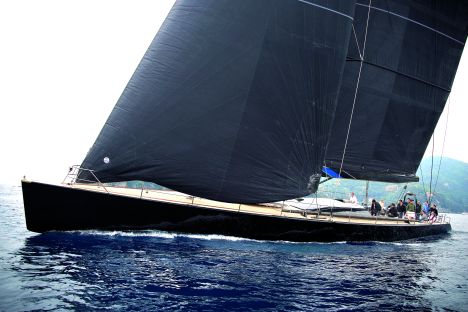
Tutti sanno della passione dell’Avvocato Giovanni Agnelli per la bella vita, per la sua Juventus, per le Ferrari e le corse d’auto e per la vela. Negli anni sessanta l’Avvocato, durante uno dei suoi numerosi viaggi negli USA, aveva avuto l’occasione di veleggiare persino sulla barca del Presidente del Stati Uniti JF Kennedy.
Fu in quel periodo che gli venne l’idea di organizzare un consorzio italiano per lanciare la sfida alla Coppa America , ma quando rivelò le sue intenzioni agli amici d’oltre oceano fu vivamente sconsigliato visto che da noi la vela era ancora a livello primordiale. Venti anni dopo, con la complicità di Cino Ricci e dell’architetto Vallicelli , convinse il presidente e fondatore dello Yacht Club Costa Smeralda, il principe Karim Aga Khan, a costruire la mitica Azzurra che nell’edizione della America’Cup del 1983 arrivò sino alle semifinali, battuta dall’invincibile Australia II che poi compì l’impresa di soffiare la coppa agli Americani.
Ma non solo la coppa America, all’Avvocato piaceva anche la crociera a patto di avere barche veloci. Si perché la bonaccia l’annoiava. A lui piaceva la barca sbandata con le vele cazzate per provare la brezza della velocità sull’acqua. Il suo sogno era battere il record di traversata atlantica , sicuro che in Oceano il vento non gli sarebbe mancato.
Nel 1988 si fece costruire l’Extra Beat un maxi yacht di 36 metri bellissimo ed anche veloce, ma non era la barca che lui sognava. Contattò allora German Frers, architetto argentino, molto conosciuto nel mondo della vela per aver realizzato barche velocissime e vincenti. Frers progettò uno scafo rivoluzionario e nel 1996 in Inghilterra varò lo Stealth . Una barca di 26 metri di lunghezza, costruita interamente in carbonio e con un albero di ben 36 metri. L’unico vezzo era la coperta rivestita in teak.
Il nome venne preso dai cacciabombardieri USA, invibili anche ai radar, e che erano verniciati di nero, così anche lo Stealth del mare fu realizzato con un look total black, scafo e vele comprese, in controtendenza rispetto alle precedenti barche che avevano colori molto vivaci.
L’Avvocato ed il suo equipaggio, in maggior parte, parteciparono a molte regate anche d’altura, ottenendo sempre risultati straordinari, anche perché all’epoca l’uso dei materiali compositi era molto raro e le doti di performance dello Stealth erano uniche ed inarrivabili per molti concorrenti.
Lo Stealth ha una coperta completamente piatta con gli osteriggi a filo, ed una tuga corta e squadrata che ricorda moltissimo il muso dell’aereo invisibile. Il pozzetto ampissimo grazie al baglio massimo arretrato offre un’abitabilità agli ospiti e facilita le manovre dell’equipaggio in regata. Dotato di volanti strutturali e doppia timoneria, ha un boma a forma di parallepipedo anch’esso in composito. L’armo è studiato appositamente per le regate tanto che non è previsto l’amantiglio, così che il boma, con la randa ammainata, deve essere appoggiato su un apposito sostegno.
Certamente questa barca resta tuttora una delle più belle ed innovative al mondo, tanto che molti progettisti si sono, non a caso, ispirati allo stealth per realizzare i propri disegni. Forse l’Avvocato al timone non era uno skipper all’altezza di altri magnati della vela, ma sicuramente ha sempre avuto uno passione smodata per questo mondo ed è grazie a lui, se la penisola italica, ha potuto raggiungere traguardi importanti in questo mondo, prima appannaggio esclusivo di marinai di stirpe britannica o francofona.
Lascia un commento Cancel Reply
Il tuo indirizzo email non verrà pubblicato.
You may use these HTML tags and attributes: <a href="" title=""> <abbr title=""> <acronym title=""> <b> <blockquote cite=""> <cite> <code> <del datetime=""> <em> <i> <q cite=""> <s> <strike> <strong>
Salva il mio nome, email e sito web in questo browser per la prossima volta che commento.

- Panoramica privacy
- Cookie strettamente necessari
- Cookie di terze parti
- Cookie Policy
This website uses cookies so that we can provide you with the best user experience possible. Cookie information is stored in your browser and performs functions such as recognising you when you return to our website and helping our team to understand which sections of the website you find most interesting and useful.
I cookie strettamente necessari dovrebbero essere sempre attivati per poter salvare le tue preferenze per le impostazioni dei cookie.
Se disabiliti questo cookie, non saremo in grado di salvare le tue preferenze. Ciò significa che ogni volta che visiti questo sito web dovrai abilitare o disabilitare nuovamente i cookie.
This website uses Google Analytics to collect anonymous information such as the number of visitors to the site, and the most popular pages.
Keeping this cookie enabled helps us to improve our website.
Attiva i cookie strettamente necessari così da poter salvare le tue preferenze!
More information about our Cookie Policy
- Classic Driver
- Forgot password
- Newsletters
- Language English Deutsch
- Currency Select AUD CHF CNY DKK EUR GBP HKD INR JPY NZD SEK SGD USD
- Collectibles
- Real Estate
- CD Works Agency
- For sale CD Shop Magazine Auctions Sell
Sonny Levi G. Cinquanta
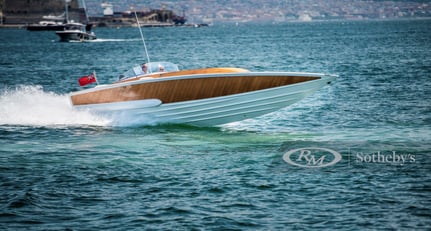
- Year of manufacture 1968
- Boat type Other
- Condition Used
- Lot number r0074
- Boat category Powerboat
- Exterior colour Other
Description
To Be OFFERED AT AUCTIONPlease note that this lot will need to be collected in Naples, Italy.
Check back soon for complete catalogue description.
To view this car and others currently consigned to this auction, please visit the RM website at rmsothebys.com/en/auctions/0420.
- Management Giants
- Business Thought
Giovanni Agnelli
Giovanni Gianni Agnelli was born on March 12, 1921 in Villar Perosa (not far from Turin), a village that had been the home of the Agnelli family for centuries. He was born to the marriage of the industrialist Edoardo Agnelli and princess Virginia Bourbon del Monte, daughter of the prince of San Faustino, Carlo del Monte. Gianni was his nickname, while his real name was Giovanni after his grandfather, the founder of FIAT.
Giovanni obtained his education in Pinerolo. He fought at the Russian, and afterwards at the North African front, where he was injured by a German soldier in a fight over a woman. Giovanni, son of a princess, married a princess himself in 1953 – Marella Caracciolo, with whom he had a son. His life fully blossomed in 1966, when he inherited the family business and took over the management of the company we all know as Fiat. He led the company through the crisis-ridden years until it became a corporation, at one moment being worth a twentieth of the entire Italian economy.
Giovanni did not begin to work until he was 46 years old; he did inherit a lot, but he also contributed a lot to the company. He was responsible for the development of Fiat at the end of the 1960s by putting the whole country of Italy on four wheels, thus adding a national dimension to the company. He bridged the worst crisis during the seventies by selling 15% of the company to the Libyan leader Gaddafi and determinedly preventing the terrorist organization, Red Brigades, from infiltrating Fiat’s 300,000 workers. At the end of the eighties, which were years of huge profit, Agnelli ventured into various other businesses (from tourism to finance), but the automotive industry remained his primary business – after all, he achieved a monopoly status through buying up all his competitors in Italy.
Fiat spread over most aspects of life in Italy, starting from the automotive industry, among which is, of course, Fiat and the automotive companies Alfa Romeo, Maserati, Ferrari, Lancia, continuing with energetics (Ital Energia), tourism (the chain Club Méditerranée), sports (the football club Juventus and the Formula 1 team), the media (the renowned daily newspaper Corriere della sera and La stampa), all the way to fashion, where he had a share in the fashion label Valentino and the sports brand Fila.
With the development of FIAT, the Italian economy, as a whole, bounced back on its feet. Gianni managed to lead the national economy destroyed by war and its catastrophes back to stable grounds – Italy was the fifth world economic power during the 1970s.
Gianni´s greatest passions were the two most successful Italian sports companies: Juventus and Ferrari. Out of 26 Italian football champion titles, 24 have been achieved with the Agnelli family at the head. Gianni was especially fond of seeing imaginative players like Sivori, Platini, Zidane and Baggio in the black-and-white sports jersey. He adored Ferrari race cars. Thus, he partnered up with his friend, Enzo Ferrari, at the end of the sixties and bought up the rest of the assets after the founder died. Giovanni Agnelli has also been characterized as a style icon defining the 20th century with his looks, his dress style and his lifestyle. His good fashion taste was confirmed by Time magazine in 1967, which described him as a man always wearing a suit, tailor-made to his measures. He is still remembered for always wearing his watch over the sleeve of his shirt.
Gianni Agnelli would call his private pilot, first thing in the morning, to ask him which part of Europe was sunny (in order to go there for a one-day-trip). When Giovanni was supposed to be taking over the company in 1966 because of the termination of Fiat´s chief of staff, who was Giovanni’s deputy while he himself was enjoying life, he was on a yacht somewhere in the middle of the Pacific, which is why he could not be informed until a few weeks later...
Agnelli’s favorite country was America, where his mother Virginia came from... He was one of the first to realize that Italy’s welfare depended on the United States, which is why he spent a lot of time there, knew all the American presidents, from John Kennedy up to his time, and intended to fuse Fiat with General Motors. “Johnny the Handsome”, as he was called by the Americans, was a family friend of the Roosevelts, Kennedys, Rockefellers, and he was close to Andy Warhol. When he went to the dangerous Harlem district, to listen to blues, the Rockefellers would employ world heavyweight boxing champion Joe Louis as his bodyguard. Being the icon of Italian style and charm, he allowed himself to call the head of the CIA, in the Langley headquarters, a “jerk”. Gianni Agnelli met with Fidel Castro, Mao Zedung and Josip Broz on a regular basis, and one of his best friends was Henry Kissinger.
The Agnelli family tragedy
Gianni’s status and wealth did not protect him from terrible family tragedies. In November 2000, his son Edoardo Agnelli committed suicide, jumping into an abyss. Despite the great family wealth and the prestigious social status, the life of Edoardo Agnelli had been full of painful experiences. His friends spoke about him as a man who “shone with a special light” and his personality differed considerably from the impression many had of him. He was very close to his cousin, Giovannino, the son of Umberto Agnelli who should have become the manager of Fiat at some stage. Unfortunately, Giovannino died of cancer on December 13, 1997. It is said that Edoardo and Giovannino Agnelli were very close and confided in each other, even if they had completely different characters and ways of life. It is further said that his cousin’s death was a very harsh blow for Edoardo. Even if Edoardo’s friends reported that he did not show any signs of deep depression during his last days, the autopsy confirmed the presumption of suicide, almost without a doubt.
The whole Agnelli family – more than seventy children, grandchildren, spouses, heirs of the Fiat founder, Giovanni Agnelli senior and his wife Clara Boselli, gathered at the family grave, on the occasion of young Edoardo Agnelli’s death. The Fiat founder and his wife had two children: their son Edoardo and daughter Niceta. The Agnelli dynasty began to spread when son Edoardo married Virginia Bourbon del Monte. They had seven children, among whom are Gianni and Umberto, former owners of Fiat as well. Gianni Agnelli and his wife Marella Caracciolo, in addition to their tragically deceased son Edoardo, have a 43-year-old daughter named Margherita, who lives in Paris with her second husband Serge de Pahlen, with whom she has five children. She also has three children from her first marriage with Alain Elkann. Aside from deceased Giovannino, Gianni’s brother Umberto Agnelli has two more children from his marriage with Allegra Caracciolo. Gianni Agnelli, except for his brother Umberto, has four sisters. The third brother, Giorgio, died after a long and severe illness at the age of 36. One of the Agnelli sisters, Susanna, the former Minister of Foreign Affairs in Italy, has seven children.
The death of his son hit Giovanni very hard, as well as the preceding death of his nephew Giovannino, who had died of cancer and who was meant to inherit the whole empire.
After all these family tragedies, Gianni Agnelli chose his eldest grandson John Elkann, the son of his daughter, as his heir.
Giovanni Agnelli died in January 2003, at home, surrounded by his numerous family members, in traditional Italian style. He was buried in the family tomb with all the honors, the most popular Italian of the last century deserves.
Number 161-162 - December 2022.-January 2023. .
- Interview - Svetoslav Atanasov COCA-COLA
berza_title!
Fondovi_title, kursna_title.
Customer service
© 2008 PROFIT MAGAZIN, all rights reserved. CMS: OCP
Promedia market doo, Redakcija Profit magazina, Ulica Birčaninova br. 2, Beograd, Srbija, Tel: +381 (0) 11 26 46 726, [email protected]

- WHAT’S NEW
- All Products
Liz O'Brien
Mark shaw ,, the kennedy family.
Kennedy, Ravello Trip, Agnelli's Yacht, 1962
From Mark Shaw’s personal collection of snapshots from a ‘dolce vita’ trip with Jackie Kennedy, Fiat magnate Giovanni Agnelli, his wife Marella, Jackie’s Secret Service agent Clint Hill, and Pat Suzuki, Mark’s wife. All Mark Shaw prints are made to order in limited editions on Hahnemuhle photo rag paper. Each print is Estate stamped on the back and signed and numbered by David Shaw, and accompanied by a letter of authenticity. Lead time is four to six weeks, but we often receive them sooner.
*Please note this image is available in several sizes. Prices increase as editions sell out.
10″ x 15″ image on 11″ x 17″ paper, 13.75″ x 20″ image on 17″ x 22″ paper, 22″ x 32″ image on 24″ x 36″ paper, 32″ x 48″ image on 36″ x 52″ paper
Reference: ravello_agnelli_boat6
- Save to Pinterest Share via email
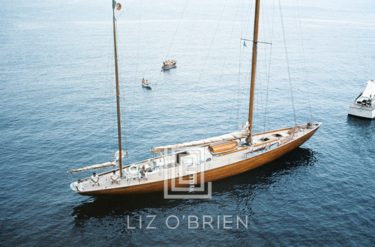
PRICE INQUIRY
We will not share your information

The global authority in superyachting
- NEWSLETTERS
- Yachts Home
- The Superyacht Directory
- Yacht Reports
- Brokerage News
- The largest yachts in the world
- The Register
- Yacht Advice
- Yacht Design
- 12m to 24m yachts
- Monaco Yacht Show
- Builder Directory
- Designer Directory
- Interior Design Directory
- Naval Architect Directory
- Yachts for sale home
- Motor yachts
- Sailing yachts
- Explorer yachts
- Classic yachts
- Sale Broker Directory
- Charter Home
- Yachts for Charter
- Charter Destinations
- Charter Broker Directory
- Destinations Home
- Mediterranean
- South Pacific
- Rest of the World
- Boat Life Home
- Owners' Experiences
- Conservation and Philanthropy
- Interiors Suppliers
- Owners' Club
- Captains' Club
- BOAT Showcase
- Boat Presents
- Events Home
- World Superyacht Awards
- Superyacht Design Festival
- Design and Innovation Awards
- Young Designer of the Year Award
- Artistry and Craft Awards
- Explorer Yachts Summit
- Ocean Talks
- The Ocean Awards
- BOAT Connect
- Between the bays
- Golf Invitational
- BOATPro Home
- Superyacht Insight
- Global Order Book
- Premium Content
- Product Features
- Testimonials
- Pricing Plan
- Tenders & Equipment

STEALTH is a 28.44 m Sail Yacht, built in the United Kingdom by Green Marine and delivered in 1996.
Her power comes from a non propelled engine. She can accommodate up to 2 guests. She has a 6.05 m beam.
She was designed by German Frers , who also completed the naval architecture. German Frers has designed 156 yachts and created the naval architecture for 168 yachts for yachts above 24 metres.
STEALTH is one of 995 sailing yachts in the 24-30m size range.
Specifications
- Name: STEALTH
- Yacht Type: Sail Yacht
- Builder: Green Marine
- Naval Architect: German Frers
- Exterior Designer: German Frers
Yachts like this
From our partners, sponsored listings.
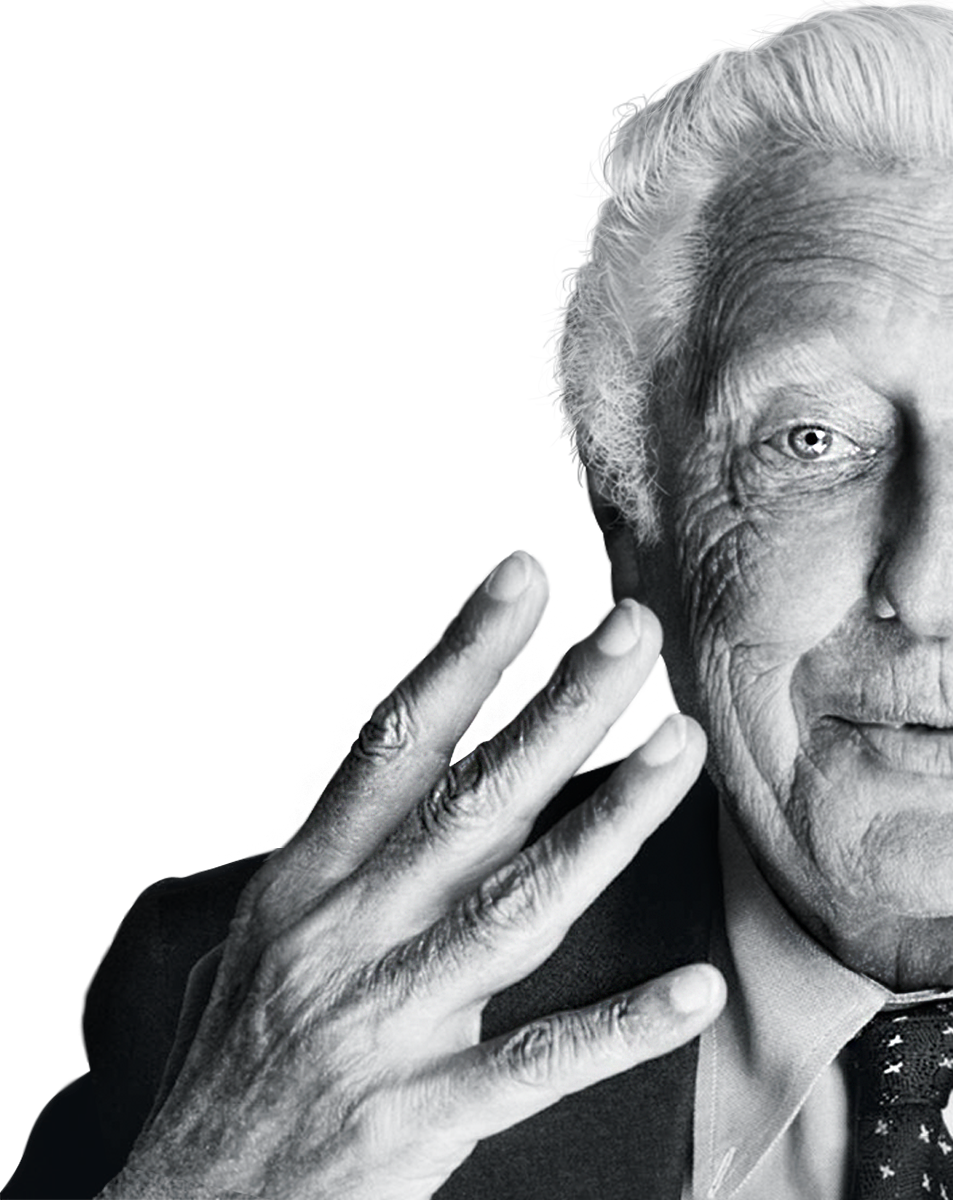
- 24 gennaio Vita
- febbraio Lavoro
- Your photos

“I didn't know Togliatti very well, but history gave its opinion on him”. Gianni Agnelli at the stadium with the Secretary of the Italian Communist Party, in 1948.

The Avvocato with Queen Elizabeth of England, in occasion for the celebrations of Italy’s Unification, May 1, 1961.


With Vittorio Valletta during a meeting with Pope Paul VI, in March 1964.

With Gerald Ford and Jesse Warner in 1969, in one of the numerous meetings with the President of the United States.

At the Quirinal Palace in Rome with the President of the Republic , Giuseppe Saragat, in occasion of the presentation of the “128 car model”.

With Charles De Gaulle in Paris, on October 4, 1968.

With David Rockefeller in 1965, in New York, during the opening of the new gate of Palazzo Italia.

With Marshal Tito and his wife, on March 27, 1971.

“Our relationship was also personal, not just political”. Gianni Agnelli and Luciano Lama, the CGIL ‘s leader, sign an agreement on the Italian salary increase mechanism matching the inflation rate.

In 1976, in Rome, with the Prime Minister Aldo Moro, in order to discuss the difficult economic situation in Italy

“La Malfa knew the qualities and defects of this country like no other.” The Avvocato with Ugo La Malfa in Rome

With Pope John Paul II in June 1983.

The President of the Republic Sandro Pertini’s visit to La Stampa in 1984.

Meeting between The Avvocato and George H.W. Bush, the 41st President of the United States, St. Cloud, Minnesota, in 1986

In Venice with Ronald Reagan, the 40th President of the United States, for the American Industrialists Meeting, on June 11, 1987.

“If I had to say what has been the most important film I have seen, I would say: Amarcord”. Gianni Agnelli with Federico Fellini, in 1947

With the philosopher Norberto Bobbio at La Stampa, in 1991

With the Russian Soviet President Michail Gorbaciov, visiting La Stampa, in 1989.

With the King Juan Carlos of Spain on board the yacht “Extrabeat”, in 1988.

Meeting between life Senators: Agnelli and Andreotti in Senate, in the 90’s.

The Avvocato with Fidel Castro in Rome, during his Italian trip, in November 1996.

With the President of the Republic, Carlo Azeglio Ciampi, in 1993, during his visit to the Fiat Melfi Plant.

The Avvocato with Giorgio Napolitano, the future President of the Republic, at the Agnelli Foundation, on May 24, 1993.

Gianni Agnelli with his friend Henry Kissinger, American Sate Secretary and Nobel Peace Prize winner, at the stadium.

La Juventus l'abbiamo sempre avuta. Questo non è un affare; è una passione; una passione soggettiva, che però è condivisa da molta gente.

GIANNI AGNELLI: ALBUM OF A LIFETIME
- | VERSIONE ITALIANA |
NOTES TO THE TEXTS The texts collected in this website are taken from interviews and statements issued by Gianni Agnelli to the press, broadcasters and agencies, in Italy and abroad, from his prefaces of books, as well as "Intervista sul Capitalismo Moderno", edited by Arrigo Levi for Laterza in 1938. The editorial action has been limited to a few additions, that were necessary for the understanding of some passages, and some slight formal adjustments in the case of transcripts of television programs and the meeting with the students of the Sorbonne that took place on April 23, 1989 as part of the Citè de la Réussite. PHOTOGRPHIC CREDITS Agnelli Family Archive; Documentation Centre and Archive of La Stampa; Bob Krieger; Centro Storico Fiat Torino; Jean Pigozzi Archive, New York; Bettman/Corbis; Doris Brynner; The Richard Avedon Foundation, New York; Cinema Museum of Turin; David Lees/Time Life, Ferrari Spa; Italfoto; Studio Colombo. The site remains available to those entitled to any iconographic sources not identified.

“ I like the wind because you can’t buy it.”
Τα yacht και τα ταχύπλοα ήταν μια γνωστή «αδυναμία» του L’ Avvocato, όπως ήταν γνωστός ο Gianni Agnelli (1921-2003). Το μοναδικό του γούστο δεν αφορούσε μόνο την εξωτερική του εμφάνιση, αλλά ήταν πρόδηλο παντού, από τα αυτοκίνητά του και τα yacht του μέχρι την εξαιρετική συλλογή έργων τέχνης την οποία δώρισε στην πόλη του Τορίνο το 2002. Στο άρθρο αυτό παρουσιάζουμε μερικά από τα σκάφη που πλοήγησε.
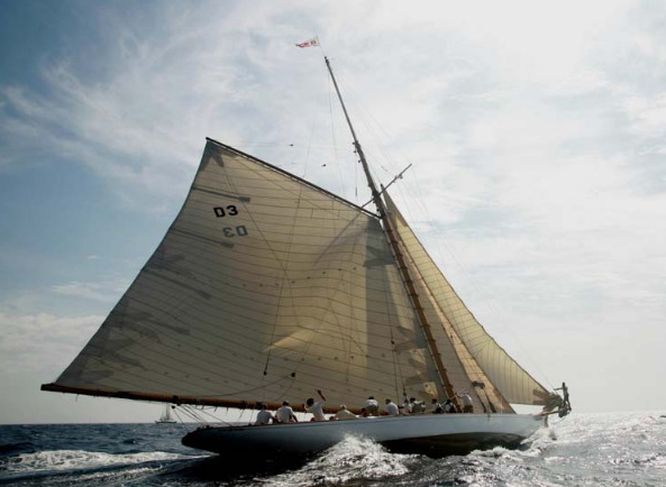
Το πρώτο γιοτ του Agnelli , το Tomahawk ήταν ένα αξιοθέατο. Το αγόρασε το 1956, κατασκευασμένο από χάλυβα και μαόνι και φυσικά με στιλ. Ένα σκάφος 12 μέτρων που χτίστηκε το 1939 σε σχέδιο του Charles Nicholson , το Tomahawk κατασκευάστηκε αρχικά για να μετάσχει στο America ’ s cup .. Το 1962 το πούλησε στην αδελφή του Susanna .
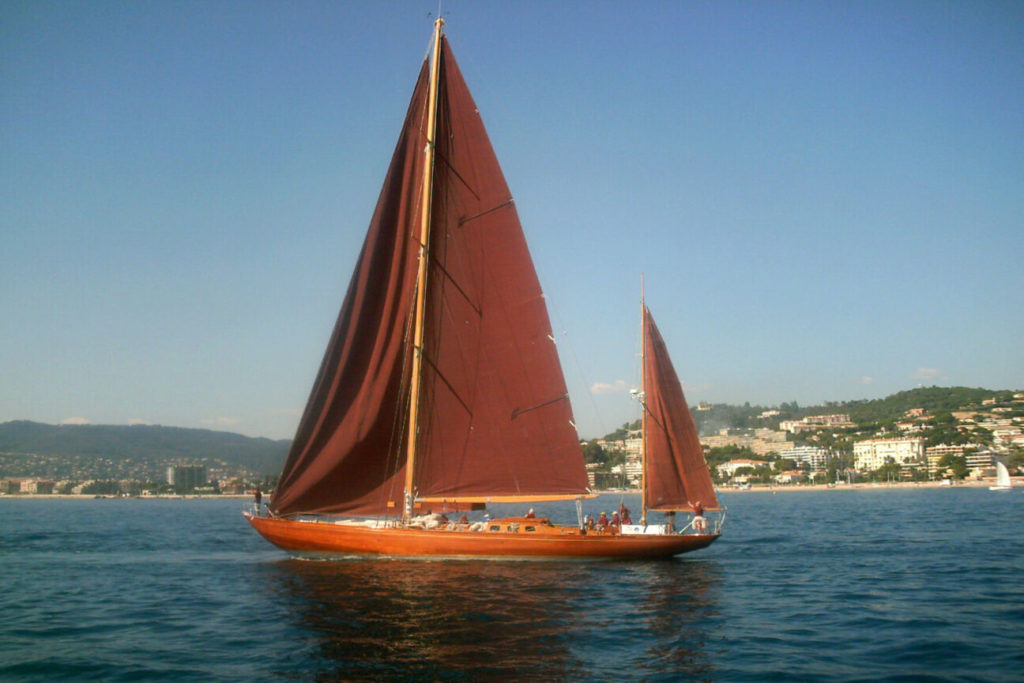
Η Agneta , που έπλευσε αρχικά το 1951, αγοράστηκε από τον Agnelli το 1959. Με κατάστρωμα από τικ της Βιρμανίας, ασημένια καναδική ερυθρελάτη και με μαρμάρινο τζάκι στην καμπίνα του ιδιοκτήτη, αυτό το 82 ποδιών σκάφος είναι ίσως το πιο ιδιαίτερο απ’ όλα τα σκάφη του L ’ Avoccato . Το ιδιαίτερο χαρακτηριστικό της ήταν τα ξεχωριστά, σε χρώμα κόκκινου κρασιού πόρτο, πανιά του.

Ο Agnelli παρέλαβε το G . Cinquanta το 1968, – ένα κομψό, σούπερ ταχύπλοο, σχεδιασμένο από τον Sonny Levi . Με τέσσερις κινητήρες BPM V -8 Vulcano , το 37 ποδιών cruiser , με σκελετό « Delta » με υπογραφή του Levi , ένα κεντρικό πιλοτήριο σχεδιασμένο από τον Pininfarina και 1.280 ιπποδύναμη, σίγουρα ξεχώριζε και όπως ήταν αναμενόμενο ο Gianni το αγάπησε.

Το Extra Beat ήταν το πιο εντυπωσιακό ιστιοπλοϊκό σκάφος της δεκαετίας, όταν έπλευσε το 1988. Ήταν το πρώτο κατά παραγγελία σκάφος του Agnelli , ο οποίος επόπτευσε το σχεδιασμό και την κατασκευή του. Ένα κομψό και διαχρονικό 36 μέτρων ιστιοφόρο που συνεχίζει να εντυπωσιάζει με το εκλεπτυσμένο του εξωτερικό σχεδιασμό και το ευρύχωρο εσωτερικό. Ήταν το πρώτο μοντέρνο super yacht που χτίστηκε από τους Abeking και Rasmussen . Ήταν ένα δοκιμαστικό σχέδιο και κατέρριψε πολλά τεχνικά όρια της εποχής του, όπως το μεγάλο πηδάλιο από τιτάνιο και άνθρακα.

Ο Giovanni Agnelli ήξερε ακριβώς τι ήθελε κατά την ανάθεση αυτού του εμβληματικού σχεδίου το 1996. «Το σκάφος θα είναι μαύρο και θα ονομάζεται Stealth. Θέλω απλώς να διασκεδάσω και να απολαύσω την πλεύση του. Και θέλω να τελειώσει μέσα σε 6 μήνες! ” Οι λεπτομέρειες δόθηκαν στο γραφείο σχεδιασμού Frers, τα ναυπηγεία της Green Marine και του δομικού μηχανικού Giovanni Belgrano για οριστικοποίηση.
Το αποτέλεσμα ήταν ένα από τα γρηγορότερα και σίγουρα τα πιο αξιοσημείωτα superyachts που κατασκευάστηκαν από την εποχή των μεγάλων μονόλιθων της J-Class, της δεκαετίας του 1930. Ο ναυπηγός Germ á n Frers , ο οποίος είχε δημιουργήσει ένα επαναστατικό κύτος, σχεδίασε το Stealth . Η κατασκευή του εξ ολοκλήρου από ανθρακονήματα, ώθησε τα όρια της σύνθετης τεχνολογίας πολύ μπροστά από κάθε superyacht πριν – και έπρεπε να είναι, επειδή τα φορτία κύτους που δημιουργήθηκαν με 15 κόμβους ήταν 2,5 φορές υψηλότερα από αυτά που μετρήθηκαν σε ένα κανονικό γιοτ. Το 28,45 μέτρων σκάφος διέθετε λευκά καθίσματα, μαύρα πανιά και κατάστρωμα τικ – η επιτομή της πολυτέλειας. Σήμερα, ανήκει στον Lapo Elkann , εγγονό του Agnelli .
Agnelli, Gianni





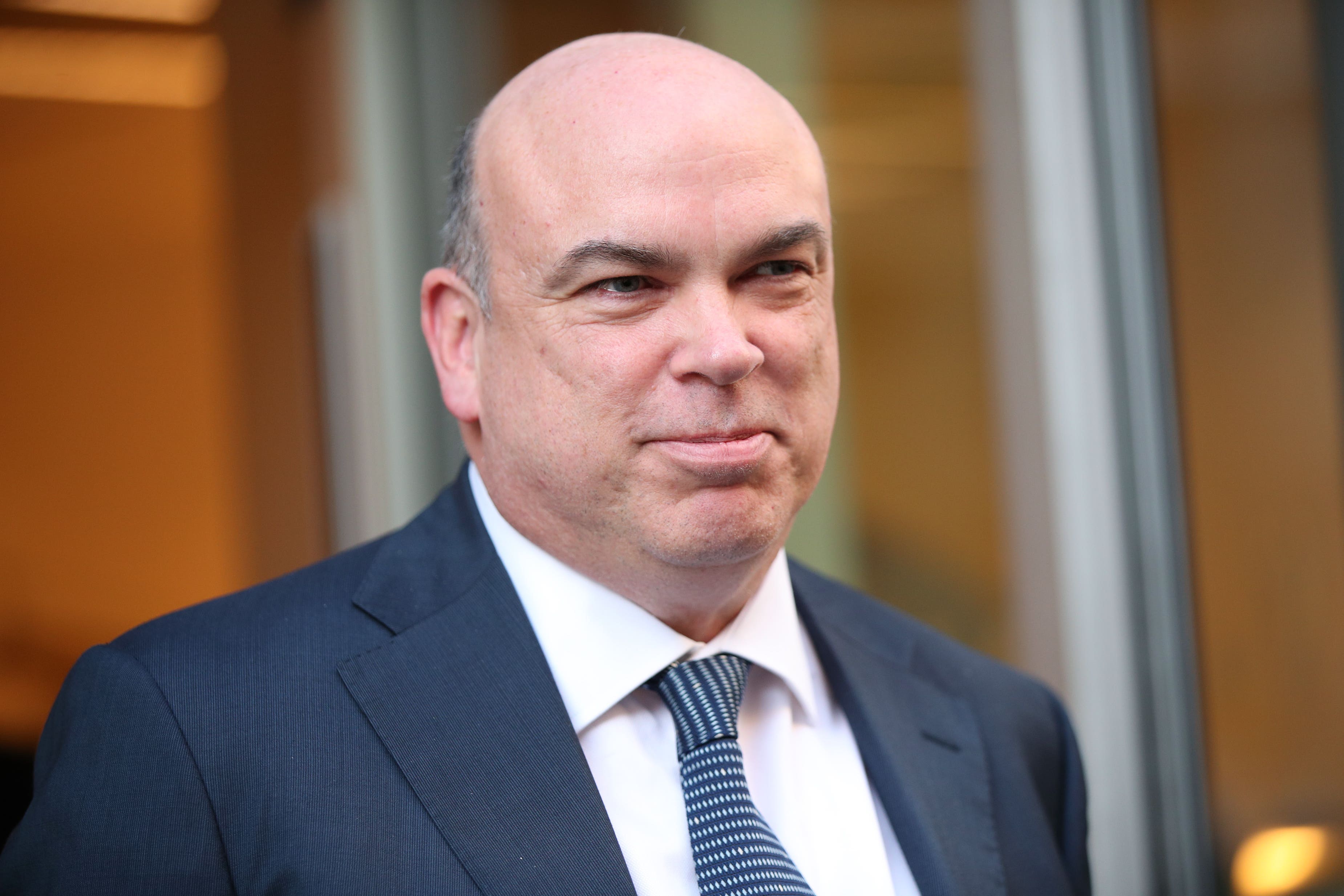


IMAGES
VIDEO
COMMENTS
From a custom-made 36-metre yacht to a Fiat Panda, these are the most outrageous vessels and cars owned by Gianni Agnelli
The Swedish architect, Reimers, named this yacht after his daughter Agneta. She went through the hands of the Fiat mogul, Giovanni Agnelli, from 1956 to 1982 and in 1987 was bought by the Italian designer, Giuseppe Andolina. In 1990 she had a refit at the Cantiere Carlini in Rimini, Italy, where she was taken back to her original rig and the ...
Agneta : famoso yacht di Gianni Agnelli Agneta lo storico yacht di proprietà della famiglia Agnelli; una barca da sogno, finemente arredata e che si vocifera abbia ospitato a bordo alcune delle più affascinanti donne del mondo tra cui Anita Ekberg, Rita Hayworth e Jackie Onassis.
La Vita Agnelli. When Gianni Agnelli died in January at 81, the honorary chairman of Fiat was revered in Italy for his industrial might and famous everywhere for his unparalleled style. But beyond ...
Giovanni " Gianni " Agnelli Cavaliere di Gran Croce OMRI OML OMCA CGVM CMG (Italian: [ˈdʒanni aɲˈɲɛlli]; 12 March 1921 - 24 January 2003), nicknamed L'Avvocato ("The Lawyer"), was an Italian industrialist and principal shareholder of Fiat.
The 36 metre sailing yacht Onelilo has been listed for sale by Jean Marie Recamier at Camper & Nicholsons. Commissioned by the Fiat boss Giovanni Agnelli, she was custom built in aluminium by German yard Abeking & Rasmussen to a design by German Frers and delivered in 1988 as a fast performance sloop named Extra Beat. Often cited as the first ...
Tutti sanno della passione dell'Avvocato Giovanni Agnelli per la bella vita, per la sua Juventus, per le Ferrari e le corse d'auto e per la vela. Negli anni sessanta l'Avvocato, durante uno dei suoi numerosi viaggi negli USA, aveva avuto l'occasione di veleggiare persino sulla barca del Presidente del Stati Uniti JF Kennedy.
Sonny Levi G. Cinquanta "G. Cinquanta" - Ex. Giovanni Agnelli RM Sotheby's - Online Only : Open Roads, The European Summer Auction | London, 21 July
Download stock image by Giovanni dit Gianni Agnelli sur son yacht F 100 avec Luca Cordero di Montezemolo - High quality fine art images, pictures, photos and videos from Bridgeman Images. Experts in licensing art, culture and history .
Giovanni Agnelli. Giovanni Gianni Agnelli was born on March 12, 1921 in Villar Perosa (not far from Turin), a village that had been the home of the Agnelli family for centuries. He was born to the marriage of the industrialist Edoardo Agnelli and princess Virginia Bourbon del Monte, daughter of the prince of San Faustino, Carlo del Monte.
The Kennedy Family Kennedy, Ravello Trip, Agnelli's Yacht, 1962 From Mark Shaw's personal collection of snapshots from a 'dolce vita' trip with Jackie Kennedy, Fiat magnate Giovanni Agnelli, his wife Marella, Jackie's Secret Service agent Clint Hill, and Pat Suzuki, Mark's wife.
STEALTH is a 28.44m superyacht built by Green Marine in United Kingdom and delivered in 1996. Explore her photos and specifications here.
Gianni Agnelli with Federico Fellini, in 1947 With the philosopher Norberto Bobbio at La Stampa, in 1991 With the Russian Soviet President Michail Gorbaciov, visiting La Stampa, in 1989. With the King Juan Carlos of Spain on board the yacht "Extrabeat", in 1988. Meeting between life Senators: Agnelli and Andreotti in Senate, in the 90's.
Τα yacht και τα ταχύπλοα ήταν μια γνωστή «αδυναμία» του L' Avvocato, όπως ήταν γνωστός ο Gianni Agnelli (1921-2003). Το μοναδικό του γούστο δεν αφορούσε μόνο την εξωτερική του εμφάνιση, αλλά ήταν πρόδηλο ...
Giovanni Alberto Agnelli (19 April 1964 - 13 December 1997), colloqually known as Giovannino Agnelli, was an Italian businessman and member of the Agnelli family, an Italian industrial dynasty associated with Fiat S.p.A. Agnelli's father was politician and industrialist Umberto Agnelli; his uncle was Fiat head Gianni Agnelli. Prior to his 1997 death at age 33, he was the heir apparent and ...
Fortunately, Giovanni had assigned a loyal and cunning lieutenant, Vittorio Valletta, to run Fiat until Gianni was ready. Gianni bought a 28 room villa in the South of France and began to explore all the dimensions of partying, with Hollywood tycoons and European aristocracy, roaring down to the beach, sailing on his yacht, casino gambling and ...
Giovanni Costantino, the chief executive of the Italian Sea Group, said there are no flaws with the design and construction of the Bayesian and it is "one of the safest boats in the world".
Discover Company Info on DON AGNELLI, INC. in Santa Clara, CA, such as Contacts, Addresses, Reviews, and Registered Agent.
The star of the show in sailing yachts since the mid 1960s, Nautor Swan is set to debut their newest power yacht, Arrow, at the Cannes Yachting Festival, September 10-15, 2024. Launched August 28 ...
Don Agnelli Inc (trade name European Auto Imports) is in the Automobiles, Used Cars Only business. View competitors, revenue, employees, website and phone number. The Most Advanced Company Information Database Enter company name. Op. city,state,zip,county . Enter company name. Op. city,state,zip,county ...
Giovanni A Castillo is a licensed and DOT registred trucking company running freight hauling business from Fontana, California. Giovanni A Castillo USDOT number is 2719582. Giovanni A Castillo is motor carrier providing freight transportation services and hauling cargo.
Ocean boat . 30 motor-yacht .Doesn't run. The motors just need maintenance. They are still new.
Don Agnelli is listed as a Chief Executive Officer with Don Agnelli, Inc. in California. The address on file for this person is 1138 Walsh Ave, Santa Clara, CA 95050. The company is a California Stock Corporation - Ca - General, which was filed on October 16, 1974. The filing status is listed as Terminated.
Giovanni Costantino — who is the CEO of The Italian Sea Group, ... which built the Bayesian in 2008 — blames an "endless chain of errors" for the luxury yacht's sinking on Monday, ...
Giovanni's Landscaping, LLC - Home. Welcome to Giovanni's Landscaping, LLC website. We're a landscaping company that provide high quality services throughout the Bay Area whether you have a landscape design that just needs update and/or upkeep or to create a brand new look for your garden and we can help you accomplish that.